#trait: deva
Explore tagged Tumblr posts
Text
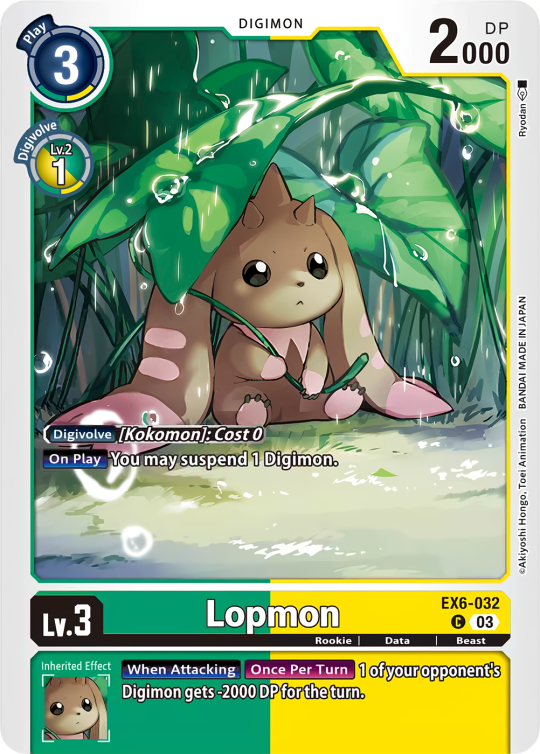
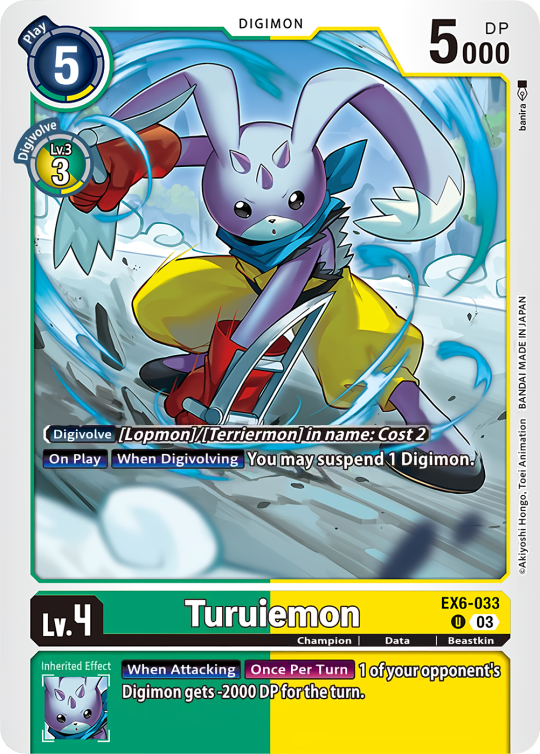
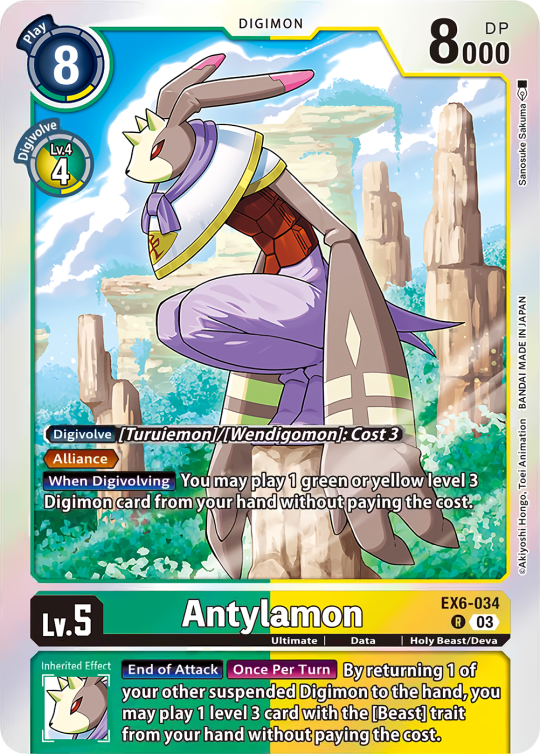
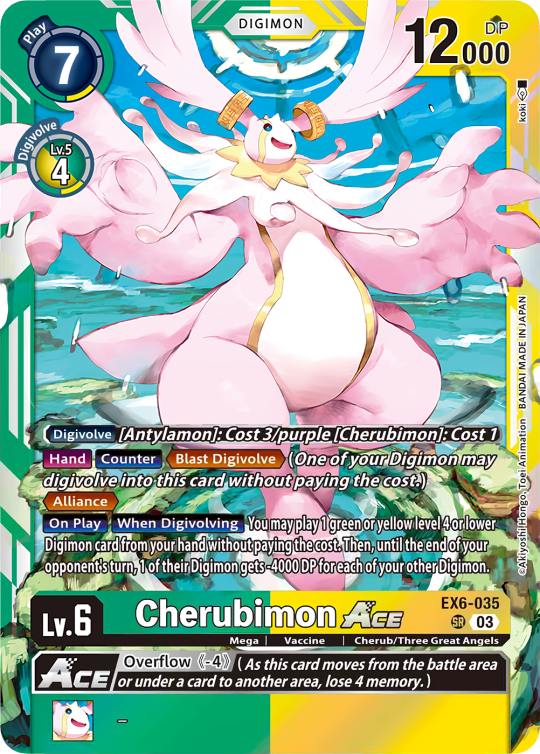
Lopmon EX6-032 by Ryodan, Turuiemon EX6-033 by banira, Antylamon EX6-034 by Sanosuke Sakuma, Cherubimon Ace EX6-035 by koki from EX-06 Extra Booster Infernal Ascension
#digimon#digimon tcg#digimon card game#digisafe#digica#デジカ#EX6#Lopmon#Turuiemon#Antylamon#Cherubimon#Ryodan#banira#Sanusoke Sakuma#koki#type: data#type: vaccine#trait: beast#trait: beastkin#trait: holy beast#trait: deva#trait: cherub#trait: Three Great Angels#num: 03#ace digimon
452 notes
·
View notes
Text
Headcanon: Avita and Nik have planetar heritage in their D&D verses because once upon a time a celestial let one of their ancestors hit. It's where Avita gets her aasimar from and where Nik gets his fucking audacity
#making headcanons based on logic and story progression ❌#committing to The Bit ✔️#man bagged a deva as his lover#the desalvars have always known what's good dude#family trait of aiming High
5 notes
·
View notes
Text
Astrology Observations pt 2: Ketu Nakshatra

Ketu natives struggle with attaching and relating to others from a young age. They are more observers than willing participants, showing little interest in faking emotions to make others feel comfortable or match the energy in a room. People tend to notice the detached behavior of Ketuvians and may judge them for it. Consequently, Ketu individuals may feel pressured to fake emotions. For Ashwini, there is a greater effort to fit into societal norms than for Magha and Mula. Ashwini is a Deva Gana (divine) nakshatra, making them appear more grounded and approachable. In fact, they often possess a mystic aura that leaves people astonished rather than intimidated unlike Magha and Mula, both of which belong to the Rakshasa Gana (demonic). Magha and Mula can come across as aggressive, potentially alienating others they have more of an intimidating but pulling energy. However, Ashwini’s efforts to “fit in” are often unsuccessful. Striving to meet societal expectations can cause more harm to the Ashwini native, leading them to suppress their feelings. This suppression sometimes results in self-destructive behaviors, as Ashwini individuals feel like they are constantly hiding their true selves. All three Ketu nakshatras: Ashwini, Magha, and Mula are quite rebellious, refusing to conform to expectations. In fact, they may deliberately disappoint others to challenge the emotional attachment to success or failure. I recall a memory of myself competing in a local festival competition, where I was winning. My family was cheering and hyping me up, but for some reason, this made me uncomfortable as it felt egoistic. So, I gave up on purpose and let the other child win, feeling happier doing so. My family was disappointed, but I didn’t care. I use to also walk away during social gatherings not to purposely be rude or anything but I felt the need to return to myself and when I would flash a smile people seemed to be uncomfortable. (I’ve read somewhere that ashwini smile can be creepy because it’s falsely exaggerated)
• Ketuvians have a natural inclination towards spirituality due to their detachment from material matters. This detachment allows them to deeply face and sit with their inner selves, often leading to a sense of emotional distance from their surroundings. For Ketu natives, expecting anything in return is rarely a priority. However, this sense of detachment creates a void within them, leading them to unconsciously drain both material and spiritual energy from others in an attempt to fill it. In the end, this process provides little fulfillment for them, yet the act of draining itself brings them a sense of pleasure, rather than the material rewards they seek. I would recommend that people with Ketu influence engage in a creative hobby. Creativity comes naturally to them, as it is not influenced by expectations of rewards or fear of judgment. Ketuvians thrive when they create because it serves as the most authentic form of self-expression.
• A physical trait I’ve observed among people with Ketu nakshatra is not just their sleepy, penetrating gaze but also their very thick, dark, wild hair. Among all the 3 naks, their hair stands out which can appear thick, long, and bushy, often seeming to have a mind of its own. Their hair is typically on the darker side, very full, almost as if you could get lost in it. It often appears unkempt, as though they haven’t brushed it or just rolled out of bed. However, there are moments when their hair is styled, and that specific hairstyle becomes synonymous with the Ketu native. For example, Mula ☽ Amy Winehouse is well-known for her messy, vintage updo. Ashwini ☉,Magha ↑ Conan O’Brien has a signature hairstyle, his wild, iconic hair often referenced as a significant part of his brand, with people constantly mentioning it. Ashwini ☽ Pamela Anderson popularized her famous messy bun, which many struggle to recreate. Lastly, Magha ☽ Aaliyah with her signature side-swoop that covered her right eye became so popular and mysterious that false rumors spread, suggesting she was concealing a glass eye.



• You’ll find that many Ketu natives are involved in niche forms of media and alternative subcultures such as goth, punk, and grunge. They are drawn to styles that often include silver chains, black clothing, distressed fabrics, and DIY fashion pieces they design themselves, reflecting anti-establishment attitudes. In fact, you can observe a strong presence of musicians within these subcultures who have Ketu nakshatras. Notable examples include Lydia Lunch (Ashwini ☽), Robert Smith of The Cure (Ashwini ☉,), Nick Cave (Magha ☽), Joe Strummer (Magha ☉, and ☽), and Paul Simonon (Mula ☽) of The Clash. Other influential figures include Layne Staley of Alice In Chains (Magha ☉,), Jim Reid (Mula ☉,) of The Jesus and Mary Chain, Iggy Pop (Ashwini ☉,), Lou Reed (Magha ☽), and Penelope Houston (Mula ☉,) of The Avengers, as well as Tom Waits (Mula ↑).
(In my research, I also noted the presence of Mercury nakshatras within these subcultures, along with Krittika nakshatra. This tracks well, in my opinion, as these nakshatras are often rebellious, individualistic, and intensely creative.)
• A consistent romantic or close platonic pairing I’ve noticed among Ketu nakshatras is with Mercury nakshatras. Mercury and Ketu nakshatras sit at the Gandanta point, where the water signs transition into fire signs a point of spiritual transformation and awakening. These nakshatras seem naturally drawn to each other, but their interactions are often karmic and toxic. However, both individuals learn significant lessons from these relationships. Interestingly, it’s typically the Mercury nakshatra that initiates and drives the relationship. The Mercury native teases and provokes the Ketu native to get a reaction, but the Ketu person doesn’t give in easily. A personal anecdotal of mine, I was friends with an Ashlesha woman when I was outpatient at a mental institute, she was dating a Magha man She would do risky things, like experimenting with taboo drugs or even stealing from him, just to push his boundaries. At first, he didn’t react much, but over time he started to secretly enjoy her rebellion. Eventually, he joined her in taking drugs, and they even engaged in ménage à trois. Things escalated until she became pregnant, and both developed a drug addiction. Interestingly, their relationship grew stronger before it began to deteriorate. She made efforts to get clean, but he continued using. Despite this, he remained an active and supportive father. However, every time he returned to her life, she would relapse, so they eventually broke up. Both went to rehab, and their lives took different yet positive turns. She pursued higher education and earned a bachelor’s degree, while he began doing voluntary counseling for kids struggling with addiction. They are now great co-parents. Ketu nakshatras are also frequently seen dating Venus nakshatras or moving within their social circles. Typically, Venus nakshatras stick to other Venus nakshatras because of their elitism, but they occasionally connect with Ketu nakshatras and sometimes even Sun nakshatras. Ketu is the most raw primal self and Venus is the refined accumulation, @venusiastro has a great post about it in much depth here.
Notes on ashwini native


Taylour Paige - Ashwini ☽
Jaime King - Ashwini ☉
• Ashwini Nakshatra’s deities, the Ashvini Kumaras, are described in Vedic texts as twin gods who ride a golden chariot. They are the Physicians of the Gods, renowned for their powerful healing abilities, including rejuvenation, making the old young again, and even bringing the dead back to life. It is said that the Ashvini Kumaras were highly skilled in Ayurveda, the original system of healing, and that they revived Sage Dadhichi. Because of this connection, natives of this nakshatra often possess a youthful appearance that carries into old age. Their faces tend to retain a childlike quality, even with wrinkles, giving them an ageless charm. This childlike quality, however, can lead others to judge them as naïve. In fact, the Ashvini Kumaras themselves were not taken seriously because of their youthful demeanor, and many assumed they were incapable due to their playful attitude. Similarly, Ashwini natives often feel the need to prove themselves to others despite their incredible talents and capabilities.
•Ashwini is always on the go and dislikes staying in one place for too long. They are the type to embark on road trips or even live without a permanent home, as they have a deep fear of feeling trapped. This restless nature is connected to their affinity with transportation and traveling, not only in the material sense but also between different realms or planes of existence. In the material world, Ashwini natives are often drawn to motorcycles or horses; like cowboys or members of motor gangs because these symbolize freedom and movement. They prefer to be freeloaders on their own journey but often enjoy traveling with a companion, as their deity is a pair of twin brothers. Ashwini’s primary symbol is the “horse’s head,” representing strength, movement, freedom, and endurance. This nakshatra is driven by a constant urge for movement, both physically and spiritually.
•Ashwini natives struggle to stay still or be patient. Because of their restless nature, they often leave tasks or projects unfinished, constantly seeking excitement in something new until that excitement burns out. They are highly independent and confident in their skills and abilities, which makes them resistant to being told what to do. Their stubbornness often leads them to ignore others, even pretending those people don’t exist. This is an inherently rebellious nakshatra. As children, Ashwini natives were purposefully defiant sneaking out or running away, sometimes with no apparent reason other than to experience the thrill of it. Personally, I’ve found myself in situations, like sitting in class or walking home, imagining what it would be like to leave my life behind and nearly acting on it. When Ashwini natives mature, they become more intuitive and insightful about the correct path to follow. However, those who haven’t evolved yet often act recklessly, doing whatever they please without truly understanding their actions. While Ashwini natives may not always finish tasks, they never give up easily. This nakshatra is incredibly resourceful. Despite a lack of discipline, Ashwini natives possess endurance and resilience. Once they master discipline, they can achieve anything they set their minds to.
• Ashwini natives are highly sensitive and easily overstimulated, with minds that are constantly racing. The symbol of the horse’s head conveys sensitivity, alertness, and an ever-present readiness. Ashwini is the first nakshatra within Aries, which, in Vedic texts, represents the head of Kala Purusha (the eternal being). The head is central to all bodily functions as it houses the brain, a concept made somewhat ironic by Ketu’s association with being headless. This connection emphasizes Ashwini’s mental impulses, making it a highly impulsive nakshatra. Ashwini natives also make excellent leaders. The Sun (Surya), associated with leadership, is exalted at its highest point in this nakshatra. In numerology, the Sun is represented by the number 1, while Ashwini is the first nakshatra. Vedic texts describe Surya as constantly moving and rising on a chariot drawn by seven horses. This ties directly to Ashwini’s symbol of a chariot and the number 7, which is ruled by Ketu. Horses, an animal associated with Ashwini, are emotionally intelligent yet fidgety and restless traits reflected in Ashwini natives. Horses are also known for their stamina, abilities, and speed, which connect to Ashwini’s shakti or power: “to attain things quickly.” This nakshatra is the fastest among all nakshatras, and as a result, Ashwini natives are often blunt, direct, and quick to get to the point. They dislike long-winded conversations and can become irritated when others fail to communicate efficiently. Ashwini individuals are fast thinkers, quick talkers, and even quick runners. For instance, I remember racing all the boys in my elementary school during recess and winning.
•Ashwini natives are deeply compassionate towards animals. Many individuals with this nakshatra (myself included) have a natural affinity for caring for animals, especially strays. They often take in sick or injured strays and nurse them back to health, Even the most aggressive animals eventually warm up to their kindness and care.
•You cannot tame Ashwini. They are like wild horses—sensitive yet aggressive and cautious. As I mentioned before, they deeply value their independence, which is one of the driving forces behind their highly individualistic nature. Ashwini natives often feel as though they stand out from others, and they sometimes sense that they possess unique talents. This is true, as Ashwini tends to have a pioneering attitude and spirit. This nakshatra is strongly connected to the original creative spark, as Vedic texts associate it with Ketu’s primordial creative potential. However, this creative energy is so intense and overwhelming that it can be difficult to harness and control much like Ashwini natives themselves. One of the weaknesses of this nakshatra is its tendency to act on impulse, attempting extraordinary things without proper evaluation. However, when Ashwini natives learn to slow down and approach their ideas with more consideration, they become true pioneers. Ashwini natives often emerge as inventors or “the first” to achieve something, and people frequently look to them for answers. However, their journey is not without challenges, as they often have to prove themselves. Others may feel the need to humble Ashwini natives, perhaps because of their boldness and confidence.
•Ashwini natives lifestyle choices often resemble those of hippies. They may live in a van or other transport vehicles, no stable job, embracing a free-spirited, go-with-the-flow attitude (often accompanied by a love for marijuana).They tend to eat vegan, have an interest in herbs, and maintain a very laid-back demeanor. Ashwini natives can also be deeply involved in activism and politics, often emerging as powerful political leaders. However, their intensity can lead to making a significant social impact, whether for better or worse, as they are willing to go to any lengths to achieve their goals. (For example, consider Malcolm X, who had an Ashwini ☽, or Hitler, who had an Ashwini ☉.)
•Ashwini natives can be tricksters, often playing with illusions. This trait ties to their deities’ story, where ancient texts recount how Indra warned Dadhichi not to teach the Kumaras Brahma-Vidya (the knowledge of creation), as their occupation placed them outside that realm. Indra threatened to cut off Dadhichi’s head if he disobeyed. When Dadhichi shared this with the Kumaras, they devised a clever plan. Using their incredible skill, they removed Dadhichi’s head and replaced it with a horse’s head. After Indra eventually cut off the horse head, the Kumaras restored Dadhichi’s original human head.
•I’ve observed that Ashwini natives have bright, radiant eyes, regardless of their color. It’s as if the sun is reflecting in its most powerful and raw form. This nakshatra is associated with the Ashvins, the gods of the dawn, and their eyes resemble the striking ambience of the dawn sky.


• Red and black are Ashwini’s theme colors (the nakshatra color is blood red). Whether it’s red lipstick or clothing paired with dark hair and darker garments or red, this color palette complements them beautifully.


•Ashwini natives, with their strong Ketu influence, have the innate ability to detach from the physical world, which allows them to transcend boundaries and connect with higher spiritual realms. This detachment gives them the ability to enter and exit their body at will, a key trait that allows them to access profound healing abilities, both spiritual and medical. Their intuitive healing is often centered around a deep connection to the etheric and energetic bodies, allowing them to sense and manipulate energy in ways that others cannot. This spiritual detachment also grants them heightened clairsentient (feeling) and clairaudient (hearing) abilities. They may receive intuitive messages or insights through their senses, such as hearing things others do not or feeling the emotions and energies of those around them. These abilities make Ashwini natives highly sensitive to their surroundings, but they must learn how to refine and discipline these gifts to fully harness their potential. Without proper self-control, their sensitivity can become overwhelming or scattered. In order to master their abilities, Ashwini natives need to engage in spiritual practice, which helps them ground themselves and refine their intuition. Through meditation, self-reflection, and healing practices, they can learn to navigate their advanced perceptive skills. This discipline will also enhance their capacity for self-healing, as they can better understand their own energetic blockages and clear them.
Notes on Magha natives


Eva Green - Ashwini ☽ Magha ↑
Wyntor Gordon - Magha ☉, Mula ☽
• Magha is deeply connected to Pitra Loka, the realm of ancestors, which ties the nakshatra to the afterlife and ancestral guidance. This connection imbues Magha natives with a sense of respect for their heritage, tradition, and the spiritual wisdom passed down from generations before them. The symbolism of Magha often revolves around endings, death, and mourning, reflecting the process of transformation that occurs after death, both in the physical world and spiritually. Magha natives are not only influenced by the idea of death but are also tasked with channeling the energy of their Pitris (ancestors), who are seen in Vedic texts as protectors and nurturers of humanity. The elder energy associated with Magha comes from this ancestral connection, giving natives a wisdom that feels ancient and timeless. This is reflected in their aesthetic choices like vintage clothing, gothic aesthetics, and worn-out pieces, often oversized, especially suits. This style can reflect the idea of both embracing the past and holding onto something that endures beyond time. Their look may carry a sense of nostalgia or reverence for history, much like their reverence for their ancestors. Additionally, sunglasses are an intriguing detail in the styling of Magha natives. Since the eyes are ruled by the Sun, Magha’s co-ruler, and Ketu deals with what’s hidden, sunglasses serve as a way to shield the eyes from direct visibility. This style element not only creates a sense of intrigue but also connects to their desire to maintain a sense of privacy or inner world Interestingly, I’ve also noticed Ashwini natives embracing sunglasses, which might be due to their own connection to Ketu , Sun and the desire for some form of distance or protection.




•Magha natives are indeed eccentric,(it is a nodal nakshatra after all) The Ketu rulership and Their connection to the Sun imbues them with a strong sense of purpose, often manifesting in a unique and unconventional personality. They are deeply drawn to exploring and expressing their individuality, sometimes in ways that challenge or defy societal expectations. This can make them appear mysterious or intriguing to others, as they seem to balance their rebelliousness with a deep respect for tradition and responsibility. Their ability to maintain a strong sense of duty, while also pursuing their own path, creates a dynamic where they seem both grounded and unpredictable, operating outside the conventional norms.
• Magha natives are also psychically sensitive, often experiencing prophetic dreams or gaining insight from the deep unconscious. Their ability to tap into these deeper realms allows them to perceive information that others may miss, sometimes giving them glimpses of the future or hidden truths. They are aware of their sensitivity and may even cultivate it, allowing their intuition to guide them in their life decisions. In contrast, Mula and Ashwini natives may not always be as aware of their own psychic abilities.
•While Magha is a Ketu nakshatra, and Ketu is inherently separative and disassociating from the material world Magha itself is quite active in the material realm. This paradox exists because Magha is a dutiful nakshatra, deeply tied to social responsibilities, status, and the preservation of tradition. Magha natives often feel a sense of duty towards their community or heritage, and they take their responsibilities seriously, striving to uphold their legacy and make their mark in the material world. However, Magha’s rebellious streak inherited from Ketu emerges in its challenge to authority and conventional structures. While they engage in the material world, they are not easily controlled by external forces or expectations. Their rebellious nature often manifests in their refusal to conform to authority, whether it’s societal norms, hierarchical systems, or traditional rules. This makes Magha both deeply connected to the world around them and simultaneously disconnected from its oppressive forces.
• Magha natives often feel a deep connection to the past, and this is reflected in their affinity for older, nostalgic items like typewriters, record players, and handwritten letters rather than modern conveniences like text messages. They value tradition and often hold onto physical objects that evoke a sense of history, reflecting their respect for ancestral legacies. Their love for the past is tied to their desire to remain rooted in something timeless, rather than being swept away by fleeting trends.They also pride themselves on being independent and introspective, often cultivating a deep sense of self-awareness and self-reliance. This introspection extends to their interest in the occult sciences and psychology, fields that allow them to explore the deeper workings of the mind and the mysteries of the unseen. Magha natives are not only drawn to uncover hidden truths about the world but are also fascinated by the complexities of human nature and the psyche. Their connection to both the past and the unseen realms makes them uniquely equipped to navigate the spiritual and material worlds.
•Magha natives often have voices that are deep, haunting, and gritty like they’ve smoked a pack a day. These voices carry a raw, almost preachy quality that can feel intense and captivating. The haunting tone can linger with you. Magha natives like Nick Cave and King Krule exemplify this with their powerful, commanding voices that have authority and emotional depth. Their sound is evocative, drawing you in with a sense of vulnerability and intensity. A similar voice can be found in Mula ↑ Tom Waits, whose gravelly, weathered voice carries a unique rawness. Other Gandanta nakshatras, like Ashlesha ☉, Revati ☽, and ↑ Louis Armstrong, also share this gritty, haunting vocal quality. Anja Plaschg (with Revati ☉ and Ashlesha ☽) and Bill Skarsgård (with Ashlesha ☉) in Nosferatu similarly possess voices that carry a dark, magnetic energy that is intense yet strangely mesmerizing. These voices feel untamed and primal.
•Magha’s shakti, “the power to leave the body,” reflects its unique ability to access deep states of consciousness, sometimes akin to a trance or temporary death. This capacity for profound detachment is referenced in some old Vedic tales, where the nakshatra is described as the heat generated by the speed of a shift in the field of consciousness. It implies that Magha natives can experience altered states of awareness that transcend the physical realm. A great example of this influence can be seen in Magha ☽ native David Lynch, who embraced Transcendental Meditation (and has his own program that teaches this method) This practice is said to allow individuals to effortlessly tap into unlimited reserves of energy and creativity qualities that are also central to Magha’s essence. Magha natives are often able to access deep, limitless wells of inspiration, channeling them into their work and life. This transcendental quality is characteristic of the nakshatra’s connection to ancestral wisdom and the ability to harness spiritual and creative energy.
•Magha natives naturally attract attention with their regal and commanding appearance. The symbol of Magha is a royal chamber containing a throne, signifying dignity, authority, and a connection to ancestral pride. Interestingly, many Magha natives are often photographed sitting in chairs or thrones, exuding a majestic aura that aligns with this symbolism. Take Magha ↑ Eva Green, in the photo above for example.
Notes on Mula natives


Beatrice Dalle - Mula ☉ Magha ↑
Anjelica Houston - Mula ↑
•Mula is deeply connected to the concept of the root, as its name and symbol both relate to the foundation or the deep core of something. Just as roots lie hidden beneath the surface of the forest, this nakshatra embodies the idea of digging deep to uncover what is concealed or not immediately apparent. Mula natives have an innate drive to get to the very essence of things, whether that involves unraveling mysteries, exposing hidden truths, or understanding the underlying structure of existence. This relentless pursuit of the core reflects Mula’s connection to transformation, as true growth and rebirth can only occur by addressing and understanding the roots.
•Mula has a profound interest in deep knowledge, often delving into the occult and exploring the unknown or unseen. They possess an innate understanding of hidden truths and are drawn to unraveling mysteries that others might overlook. You’ll often find Mula natives in private or niche libraries, completely immersed in studying various topics, from complex theories to alternative ideologies, anything that challenges or contradicts material reality. Their thirst for knowledge goes beyond surface-level understanding, as they are committed to uncovering the roots of existence and the deeper workings of the universe.
• The deity of Mula is Nritti, the goddess of dissolution and destruction. Her name translates to “calamity,” reflecting her association with chaos, endings, and dismantling illusions. In some Vedic texts, Nritti is described as a destructive demon, while in others, she is referred to as Alakshmi, the opposite of Lakshmi, the goddess of wealth, abundance, and prosperity. However, it’s important to note that while Nritti embodies destruction, it is not without purpose. Her nakshatra represents the highest point of material accumulation, which acts as a foundation for the beginning of spiritual awakening. Mula’s energy dismantles attachment to the material world, paving the way for transformation and the pursuit of higher consciousness. This duality of material success and spiritual liberation is a defining characteristic of Mula, making it a nakshatra of profound growth and evolution through intense trials.
•Mula natives often come across as apathetic, showing a disinterest in certain moralities or societal norms. However, this seemingly “depraved” outlook can be strangely liberating. they lack self-doubt, and their sharp wisdom, whether conscious or subconscious, often helps others reach higher states of awareness. Mula natives are known to underplay even the most intense life events with sarcasm or dry humor, a coping mechanism that can put others off. Their approach to situations, coupled with their intense and impulsive nature, may result in behaviors that shock or intimidate people. Mula is a nakshatra of extremes; hard, sharp, and dreadful—reflecting the destructive aspects of Ketu. This sharpness, while harsh, is often necessary to trigger awakenings and spiritual transformations. Mula’s intensity, combined with its raw, unapologetic energy, can intimidate others even when no harm is intended.Take Keith Richards, for example, a Mula☉ native. Many people find him intimidating because of his dark, shaggy hair, deep eyes, and brooding presence. Despite his appearance and history of addiction, he defies the typical rock star stereotype. Unlike many of his peers who chased the party lifestyle and fleeting relationships, Keith has been married to the same woman since the ’80s and showed deep care for the mother of his first two children until her passing. While other rock stars indulged in reckless pursuits, Keith’s grounded loyalty and respect for the people in his life set him apart. Those who know him often describe him as surprisingly sweet, proving that Mula’s sharpness hides a deeper, more sincere core.
•Mula has a tendency to cut off anything or anyone they don’t deem useful. Being part of the butcher caste, they embody the energy of severing ties and eliminating what no longer serves a purpose. This reminds me of their alternative deity, Kali, who is often depicted with her tongue out, holding a decapitated head. Mula is deeply tied to destruction, but this destruction is not without purpose; it paves the way for regeneration and transformation, even if the process feels harsh or ruthless. I’ve found that Mula natives naturally crave the deconstruction of the superficial. There’s a deep yearning within them to annihilate illusions, driven by an intrinsic feeling of emptiness. This emptiness motivates them to break through falsehoods, either to experience their own rebirth or to guide others through karmic transformations. Their shakti lies in the power to ruin, destroy, and break things, paving the way for profound change and renewal.
•Mula is also associated with intoxication and smoking, a trait I’ve noticed with other Ketu nakshatras as well. I believe this connection stems from Ketu being headless, leading to an oral fixation as a way to seek stability or stimulation. Additionally, there’s something mystifying about smoke clouding your face, giving the impression of being “not there,” which aligns perfectly with Ketu’s inherent sense of detachment and otherworldliness.
•As I mentioned before, natives with Ketu nakshatras often have notable hair. Mula natives, in particular, tend to have smooth, silky black hair that is almost reflective. Mula is associated with Sage Pulasthya, whose name translates to “having smooth hair,”. Another notable physical trait among Mulas is gap teeth.




• Mula natives possess a peculiar magnetism that can completely consume you. No matter how intimidating they may seem, you can’t help but feel drawn to them. Mula is associated with being surrounded by the galactic center of the universe, often referred to as a black hole. Like a black hole, Mula natives have an irresistible pull that draws you in.
Thank you for reading, a reminder that these are my observations from both personal experiences and what I’ve read from vedic text. sources: The Book of Nakshatras by Prash Trivedi & Barbara Pijan Lama Jyotisha site.
#vedic astrology#astrology observations#ketu nakshatra#ashwini nakshatra#magha nakshatra#mula nakshatra
434 notes
·
View notes
Text
Astrological Wonder #2: Mrigashira and the Forbidden Fruit Archetype
Background Info: Mrigashira and the experiences of them being chased by something that they know they can't have. I want to talk more about this idea because the people close to me have dealt with this situation. Being in a situation where they are not available in some way, and people get even more "enchanted" by them in the process.
To explain the mythology of Mrigashira, the deity for this nakshatra is Soma (Chandra), who in Hindu astrology was born three times by Brahma, who is the ultimate creator of the universe. Chandra was married to all 27 Dakshas' daughters, which represents the 27 nakshatras, but out of all the wives, Chandra loved Rohini the most. By the jealousy of the other wives, Daksha cursed Chandra, so Chandra's light began to dim and creating a waning moon. Mrigrashira also represents the deer head, which in the mythology of Brahma(who in some older Vedic texts is called Prajapati), the creator of the ultimate creation of the universe. Brahma loved the creation of beautiful things, and due to no population being created yet, he disgustingly tried to fornicate with his daughter Rohini for immortality. To escape her father, she turned into a deer and ran away. This story is very similar to the French story of Peau d'Âne, where a daughter wore donkey skin to run away from her father due to him wanting to marry her. Soma is also known for its tantalizing effects due to being the nectar of immortality (which was why Brahma wanted to fornicate with his daughter) and ecstasy, providing pleasurable and medicinal properties.
Deers are often symbolized for innocence, but also victimization due to deer being a natural prey within the animal kingdom (poor deers). However, I also want to mention that Mrigashira is a serpent yoni nakshatra (yoni types describe sexual/spiritual archetypes; serpent yonis are intuitive, sensual, and magnetic). In the texts of the Bible, the serpent convinces Eve to eat the fruit, taking a chance for her to break the rules that God had given to both Adam and Eve, representing the voice of tempation (Rohini also has a sepernt yoni as well but the themes surrounding the forbidden fruit for this Nakshatra are a bit different from Mrigashira). In Hindu texts, serpents are also associated with Kundalini, which are the powerful force of the divine energy that guides one to spiritual liberation.
Claire Nakti mentioned in her old and deleted post of Mars nakshatras that when women reach past that stage of playful sexual energy and into the stages of divine womanhood, Martian women are more appealing than Mercurial. Martian women are also depicted as strong forces, whether they are bullies of another, or at that "awkward" stage of life until they embrace their totality, or fully reject outside influences and are okay with being an outsider. Martian women are okay with showing their bodies, uplifting women to care for themselves, and to focus on themselves, as Martian women who naturally embody masculine traits are not afraid of what others think of them due to that expansive heat filled energy (especially using the heatful energy to open up those who are naturally closed ahem ASHLESHAS).
Lastly, Mrigashira nakshatra is the deva gana and within the mridu nakshatras. Mridu nakshatras are known for their tenderness and gentleness as well, mostly focusing on relationships and creative pleasures. Deva gana are also known for their humble nature, morality, and thoughtfulness of others. I think due to Mrigashira being within softer categories (@invenusworld mentioned this as well), people do not take Mrigashira's words seriously when they put their foot down. Although it's a Mars nakshatra and they do have the ability to be externally corrosive and internally pleasant, I think Dhansishtas and Chitra's have a bit more issues dealing with those who consider them to be "problematic" and such rather than Mrigashira (although it's still there with Mrigashira individuals just towards a smaller degree), due to that gentle nature of them.
Let me provide some examples!
The Greatest Showman
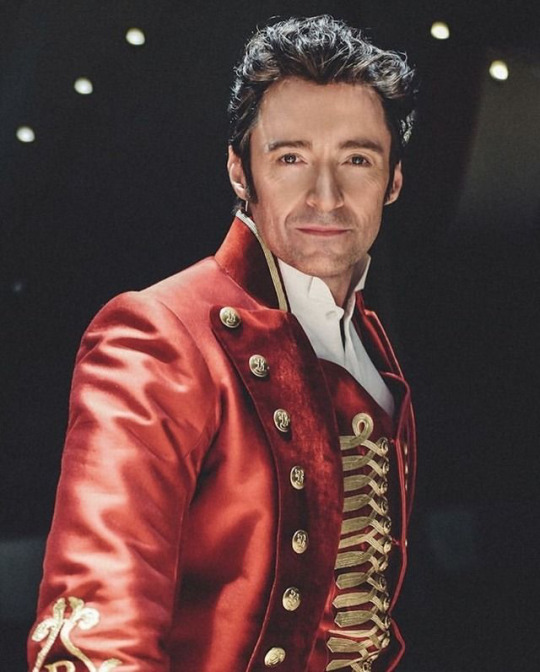
Hugh Jackman (Mrigashira moon): I know that I mainly wanted to focus on this with women but I thought this would be a good example. In the movie The Greatest Showman, in the same fraction of the film, due to his being too invested in his work, he started to work with Jenny Lind. Jenny started to have a crush on him, and I think she even tried to kiss him in the movie, knowing he was married💀
Moulin Rouge
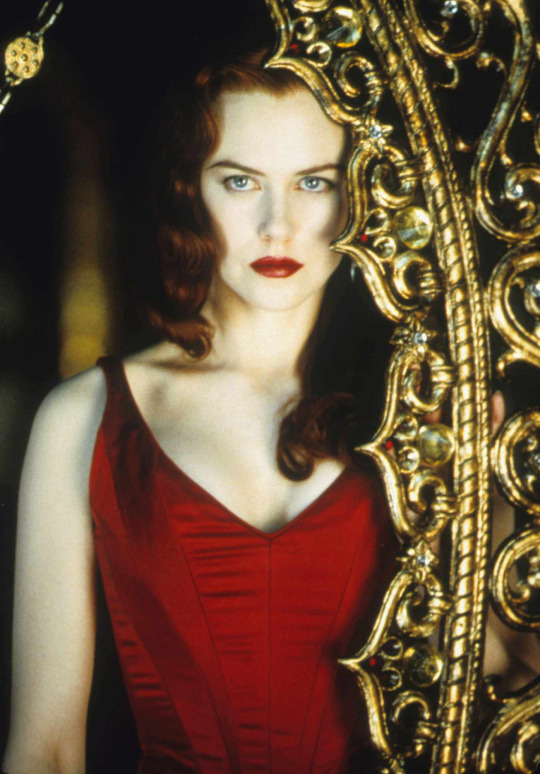
Nicole Kidman (Mrigashira Sun): In Moulin Rouge, Satine is being chased by the Duke, who wants to have sex with her in exchange for converting the club to a theater. The Duke tries to force Satine to fall in love with him, but Christian (an actor) catches Satine's heart before the Duke, causing him to rage and work in cohorts with Zidler to stop Satine and Christian's love affair.
Mother!
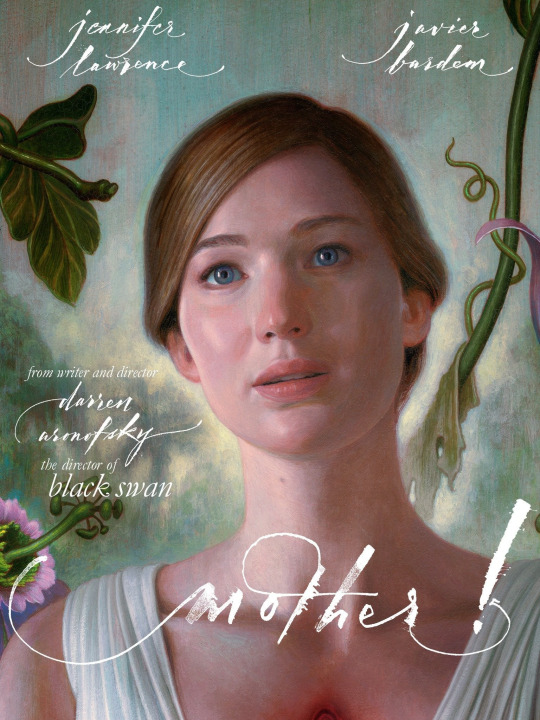
Jennifer Lawrence (Mrigashira Moon): In the movie, people take advantage of her kindness, and she constantly tries to put her foot down, but people still take advantage of her. Darren Aronofsky, the creator of this film, wanted to create this movie to depict how humanity acts towards Mother Nature (Mother) and God (her husband) in the film. In the biblical sense, people take and take what they can't have and took from Mother until she raged and ended herself in the process.
Avatar
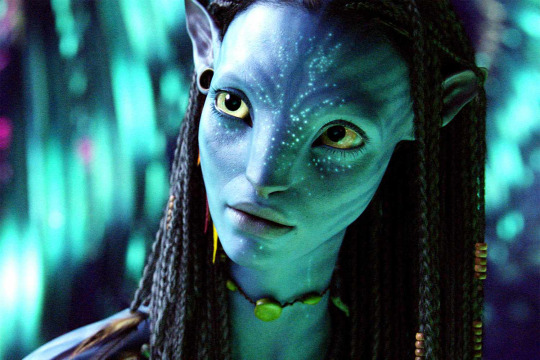
Zoe Saldana (Mrigashira Sun): A White man who invaded her planet and fell in love with her in the process when he knew shouldn’t have😭
Astrological Wonder: With this research, I wonder if Mrigashiras are seen as the forbidden fruit archetype, similarly to the Phalgunis, due to the deer symbolism and the story being Mrigashira. Mrigashira's are often depicted as those who are stalked, on the run, and being preyed upon other people and I wonder if it is due to those seeing Mrigashira as something to "conquer" (especially with the themes of the deer as deers are not only hunted by other animals but by humans too). Mrigashira reminds me of the apple that people want to eat but know they shouldn't.
I hope my post made sense LOL. Please feel free to let me know what you think!!
210 notes
·
View notes
Text

The 27 lunar mansions are divided into three primary types: Deva (divine), Manushya (human), and Rakshasa (demonic). This division isn’t meant to moralize, but to describe the nature of the energy each nakshatra embodies. Among them, the Rakshasa nakshatras carry the most volatile and boundary-pushing qualities. These are the nakshatras that stir, disturb, seduce, and transform. They are not concerned with order—they exist to test limits, reveal power, and often provoke the hidden forces in others.
Rakshasas in the Vedic and Puranic texts are powerful beings, often portrayed as enemies of the gods or disturbers of cosmic harmony. But the stories also reveal something deeper: they are embodiments of forces that cannot be easily controlled—especially sexual, magical, and destructive forces. They are not just brute beings but are frequently portrayed as intensely learned in occult knowledge, adept in shapeshifting, and capable of wielding energies that gods themselves must confront.
Nine nakshatras are typically classified under the Rakshasa type: Krittika, Ashlesha, Magha, Chitra, Vishakha, Jyeshtha, Mula, Dhanishta, and Shatabhisha. These nakshatras are often ruled by Mars, Ketu, and Rahu—planets associated with raw desire, instability, transformation, seduction, and karmic upheaval. The deities linked to these nakshatras—kartikeya, the Nagas, Indra-Agni, Nirriti—speak to this darker or more intense nature. The qualities these nakshatras represent are not evil, but they are uncomfortable. They confront stagnation and test authenticity.
A significant theme in the lore around Rakshasas is sexuality—not as romantic idealism, but as a force of power and confrontation. Rakshasas often use sex as a weapon, a snare, or a ritualized tool to destabilize the righteous or gain energetic control. Ravana was not just a lustful king—he was a being whose desire itself disrupted the balance of worlds. Rakshasi women like Shurpanakha openly expressed sexual desire, an act punished with mutilation. These stories highlight the taboo nature of sexuality when it’s stripped of societal control, and how Rakshasa energy challenges the repression and moralization of these forces.
Rakshasas are also shapeshifters, and this quality runs deep in their mythos. They can alter form, gender, age, and appearance. Their ability to transform is both literal and symbolic—it points to their mastery of illusion, maya, and astral manipulation. In this, they share a common thread with beings in other traditions, such as succubi and incubi—sexual entities known to engage in intense dream encounters or astral unions with humans. Such beings offer ecstasies and pleasures far beyond the scope of ordinary human experience. Rakshasa qualities carry a similar force—seductive, penetrating, and often obsessive. The pleasure they represent is not for comfort but for initiation.
To be born under multiple Rakshasa nakshatras is to carry these very qualities. In my own chart, Saturn—is placed in Shatabhisha, a nakshatra known for secrecy, healing, and the intense probing of hidden systems. It is a domain of veiled knowledge, ruled by Rahu and presided over by Varuna, the cosmic enforcer of truth and unseen law. This makes my karmic approach and endurance saturated with subversive insight, detachment, and confrontation with collective shadows. My Moon is in Magha, placing my emotional core in the realm of ancestral pride, power, and the hunger for status and remembrance. Mars, my lagnesha, is in Ashlesha, a nakshatra ruled by serpents, known for its hypnotic charm and instinctual manipulation. My Mercury is vargottama in Chitra, ruled by Mars and Vishvakarma, the celestial architect. Chitra is seductive, visually oriented, and carries the Rakshasa trait of dazzling, refined presentation masking a deeper drive to shape, manipulate, and beautify reality. My Jupiter Atmakaraka and Rahu are both in Vishakha, which burns with obsession and the drive toward union—whether divine, erotic, or destructive.
Taken together, these placements reflect a Rakshasa-dominant chart. Not because they make one evil or monstrous, but because they anchor me in the qualities these nakshatras express: uncompromising, untamed, and transformative. These energies demand responsibility. They can’t be repressed without consequence, nor indulged recklessly without risk. But when recognized, respected, and skillfully directed, they offer a power that is direct. Rakshasa energy isn’t a curse—it’s a call to embrace the real, the raw, and the revelatory.
Interestingly, Rakshasas have also been symbolically linked to the figure of the clown—a connection that speaks volumes. In certain folkloric and esoteric circles, clowns are said to descend from or reflect Rakshasa-like beings. With their exaggerated features, garish colors, unnatural laughter, and chaotic presence, clowns embody a paradox: they entertain and terrify. Like Rakshasas, they manipulate reality, they play with masks, and they provoke a visceral reaction from deep within the subconscious. Their role is to disturb normalcy while delighting the crowd, much like how Rakshasa nakshatras disturb ordinary karmic rhythms to catalyze transformation. This explains why clowns, though meant to bring joy, are often the focus of unease, nightmares, or even phobias. Beneath the paint and the spectacle lies a powerful, shape-shifting force—just like the Rakshasa: one who dances at the edge of pleasure, fear, and revelation.
While no direct historical evidence exists - Grimaldi, who is known as the creator of the modern conception of the European clown, it is alleged that his creation may have been partially inspired by a friend who visited India in the early days of British colonialism and/or that future variarions of the clown may had been evolved due to the influenceof rakshasa. The story goes that some became fascinated with the multi-colored and terrifying appearance of these trickster deities (Rakshasas) and that people modeled clown outfits and persona partially based off of them.
#esoteric#occult#hinduism#vedic astrology#vedic astro notes#jyotish#rakshasa#nakshatras#nakshatra#spirituality#sanatanadharma
65 notes
·
View notes
Note
how does rebirth and reincarnation work in Buddhism
do memories carry over and Can personality traits or characteristics also stay the same
or does being reborn erase everything and basically reboot a person
is everyone reincarnated or just some people and what causes rebirth
if you don’t want to explain it can you please reply with links to websites where I can find information on the topic
Disclaimer: Everything I write here is less Indian Buddhism, and more "sinicized Buddhist concepts", aka "Chinese adoptation of the ideas of karmic laws and reincarnation, with a bunch of tweaks".
-There are 6 paths of rebirth: Heavenly/Deva, Asura, Human, Beasts, Hungry Ghosts, Hell. In practice, because of unfamiliarity with the Hindu Asura ("wrathful demigods"), it often gets simplified into 5 paths instead.
-Based on one's karma (consequences of one's causes), one is reborn into one of these Paths after death. The first 3 are commonly seen as the "3 good paths", while the last 3 are the "3 bad paths".
-Technically, even being reborn as a celestial being does not free you from suffering, since, despite the incredibly long lifespan of celestials and the pleasures they enjoy, their stay there is still not infinite, and they'll be reborn into a lower path once their Good Deeds Bank runs out, so to speak.
-However, in lay practice, being reborn in the Heavenly path is often considered "Good enough".
-Similarly, in more doctrinal Buddhism, the concept of "non-being" and the lack of a permanent, eternal self is a big thing (where there's no continuation of the self between each life, memory-wise or personality-wise).
-Yet after its spread to China, it was adjusted to fit, and syncretized with existing beliefs about souls and ancestor worship, and honestly, folks pretty much assumed that there is a...soul thingy that gets reincarnated, and some sort of continuation exists between each life.
-In Northern-Southern dynasty and Tang legends, there are a lot of tales about people who remembered their past lives, or people who suffered misfortune/got a lawsuit from ghosts in the Underworld bc of bad things they did in another life.
-However, in the latter case, they often don't remember. It is kinda implied that reincarnation itself blurred/erased their memories, but never explicitly explained.
-The much later Ming-Qing addition of Mengpo and her amnesia soup could be seen as a "fix-it" to that question: people don't remember their past lives bc the amnesia soup is mandatory, and the few who remembered are folks who had found a way to avoid drinking it.
-Like all folklore stuff, it's far from universally adopted, and in Liaozhai, you can still see tales like Lian Xiang's, where the fox spirit in question died, reincarnated into a human body, and remembered her old ghostly rival-turned-best-friend upon seeing her again.
-In vernacular novels and tales about reincarnated immortals and celestial deities, like JTTS and JTTN, it's more common for the protagonists to remember their original self from start to finish, or recover their memories after being informed of that fact and settle on working their way back into their old position.
-As for "does everyone have to go through reincarnation?" Unless you are a Buddha, a Bodhisattva, or Arhat, technically yes.
-After Daoism adopted the Buddhist ideas of karma and reincarnation, there were also works that suggested, by attaining immortality, you wouldn't have to reincarnate again...
-But I personally saw that as more of a "immortality just means no natural death, not unkillable" situation——the immortal in question won't have to reincarnate bc they can no longer die of old age, but if sth comes along and kill them, or they got demoted by the Heavenly Emperor for breaking celestial laws, their soul will still re-enter the cycle.
-Lastly, what causes rebirth? Well...existing. As long as you are within the Realm of Desire and a being of the Six Paths, you are subjected to the cosmological cycle, and to Buddhists, the only way out is attaining enlightenment.
230 notes
·
View notes
Text
Nakshatra compatibility in Vedic Astrology
Nakshatra compatibility plays a crucial role in determining the harmony between partners. The Nakshatras, or lunar mansions, influence personality traits, emotions, and compatibility in relationships. Understanding the compatibility between the Nakshatras of two individuals can help predict marital success, emotional bonding, and overall relationship dynamics.
In Vedic Astrology, the compatibility of two individuals is analyzed based on the Koota System, which consists of 10 main factors:
Varna (spiritual compatibility) – determines the spiritual compatibility between partners.
Vashya (control and influence) – analyzes the dominance and influence partners have over each other.
Tara (birth star compatibility) – examines the health and fortune between partners.
Yoni (sexual compatibility) – determines sexual attraction and physical harmony.
Graha Maitri (mental and intellectual compatibility) – checks friendship between the Moon signs.
Gana (temperament compatibility) – categorizes people into Deva (divine), Manushya (human), and Rakshasa (demonic) temperaments.
Bhakoot (destiny and family welfare) – determines family growth, prosperity, and longevity.
Nadi (genetic and health compatibility) – examines genetic compatibility and health issues.
Mahendra (longevity and support) – indicates the potential for long-term support.
Stree-Deergha (happiness in marriage) – checks the happiness and longevity of the wife.
Nakshatra compatibility essentials:
Certain nakshatras naturally complement each other, while others may create disharmony. In short, the best matches are based on at least these 3 factors:
Same Gana (temperament and nature) compatibility: Deva with Deva (divine with divine), Manushya with Manushya (human with human), Rakshasa with Rakshasa (demonic with demonic).
Compatible Yoni (sexual compatibility for procreation)
Positive Bhakoot and Nadi Matching (overall family prosperity and well-being prospects): ensures emotional and physical well-being.
The list of the best matching nakshatras for long-term partnerships, including marriage, for each lunar mansion:
Ashwini – Magha, Swati, Mula
Bharani – Rohini, Revati, Purva Phalguni
Krittika – Uttara Phalguni, Rohini, Pushya
Rohini – Mrigashira, Uttara Phalguni, Anuradha
Mrigashira – Rohini, Chitra, Revati
Ardra – Swati, Satabhisha, Purva Bhadrapada
Punarvasu – Anuradha, Uttara Bhadrapada, Revati
Pushya – Uttara Phalguni, Anuradha, Chitra
Ashlesha – Jyeshtha, Chitra, Dhanishta
Magha – Ashwini, Mula, Swati
Purva Phalguni – Uttara Phalguni, Rohini, Revati
Uttara Phalguni – Purva Phalguni, Rohini, Pushya
Hasta – Swati, Anuradha, Shravana
Chitra – Mrigashira, Hasta, Dhanishta
Swati – Ashwini, Anuradha, Dhanishta
Vishakha – Anuradha, Chitra, Jyeshtha
Anuradha – Vishakha, Uttara Phalguni, Rohini
Jyeshtha – Ashlesha, Vishakha, Chitra
Mula – Ashwini, Magha, Purva Bhadrapada
Purva Ashadha – Uttara Ashadha, Swati, Revati
Uttara Ashadha – Purva Ashadha, Shravana, Anuradha
Shravana – Uttara Bhadrapada, Revati, Hasta
Dhanishta – Chitra, Shravana, Swati
Shatabhisha – Ardra, Swati, Uttara Bhadrapada
Purva Bhadrapada – Uttara Bhadrapada, Mula, Anuradha
Uttara Bhadrapada – Purva Bhadrapada, Revati, Shravana
Revati – Rohini, Uttara Bhadrapada, Purva Ashadha
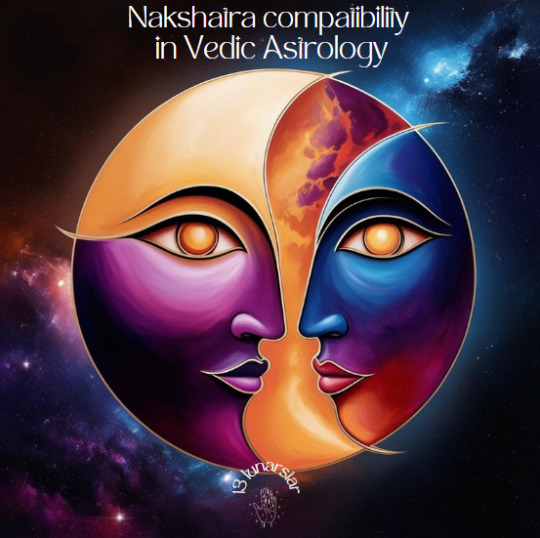
96 notes
·
View notes
Text
deva: a weapon.
the movie does everything to show us that deva holds no agency over himself or his actions and that he has no ambition whatsoever.
his main trait is loyalty, and this is emphasized again and again.
• he is enraged at the mistreatment of aadhya, but where an actual 'hero' would save her, disregarding any rules or conditions – he remains bound by his mother's words.

• he is a weapon in the hands of anybody he gives his loyalty to, and throughout the movie, all of his actions aren't really credited to him, but to the person he commits these acts for/with permission of:
1. in the first scene, we see both deva and varadha, without hesitation, understand that deva has to complete the task for varadha's honor

2. it's evident, when bilal tells aadhya, that the only person who can keep her safe is 'amma' (because it is true, only deva's mother can allow deva to help)

3. when we are first introduced to deva, it is through his mother describing him as a "blood-shedding weapon"
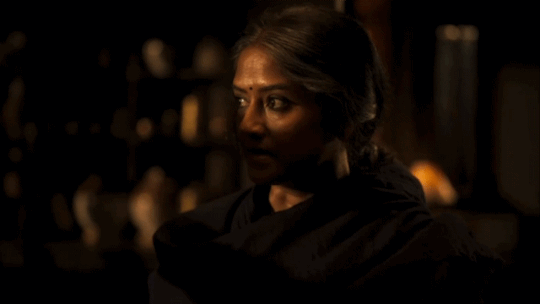
4. when varadha comes to ask deva to accompany him, the narration doesn't feel accurate. varadha has barely voiced his request for deva to go with him – it is actually deva who wants to protect him after seeing his condition, but the narration is: "on one hand varadha had decided to take deva, no matter what, and on the other hand, his mother would not allow him to go" further emphasizing that deva is comparable to an object between the only two people who 'own' him
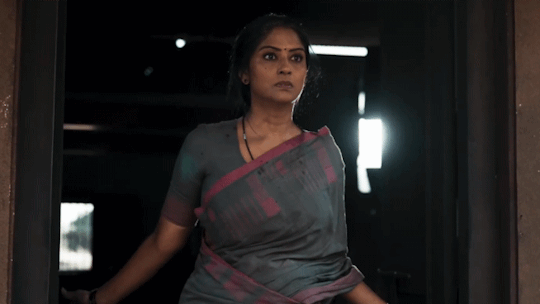
5. in the first action sequence, after his mother releases him from the promise he made to her, we have this shot:

framing deva's mother as if it is her who is responsible for that first blow
6. even after she has given him agency over himself, he still follows his mother's orders, not bothering to put any energy into what he thinks is the correct thing to do

7. we also see this when radha rama blames varadha for vishnu's death and has to be reminded that – no. it was the new guy who dealt the blow.
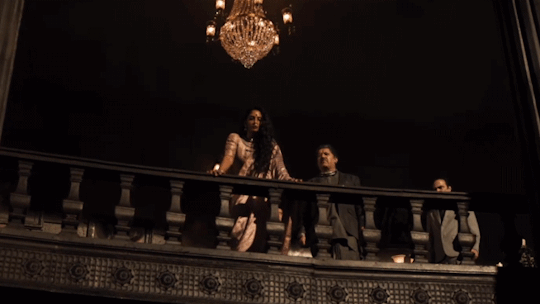
8. and again, when naarang heads in varadha's direction, completely disregarding deva and all of deva's attempts to provoke him, even though deva is the one who killed vishnu

it's an interesting way of depicting his personality – the movie equates him to a weapon at every turn, either metaphorically or though dialogue

which also makes it extremely significant, that the ONLY TIME deva has ever acted on his own (according to what we know) is when he: 1. went against his mother: to make a promise to varadha instead 2. did not follow varadha's explicit instructions: and pleaded with naarang to leave varadha alone
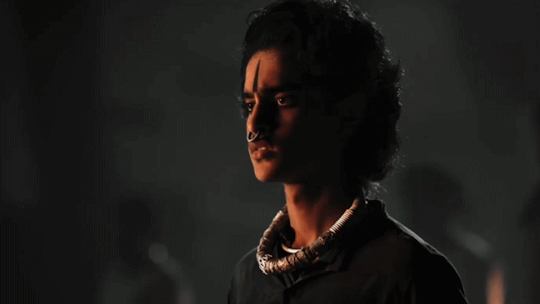
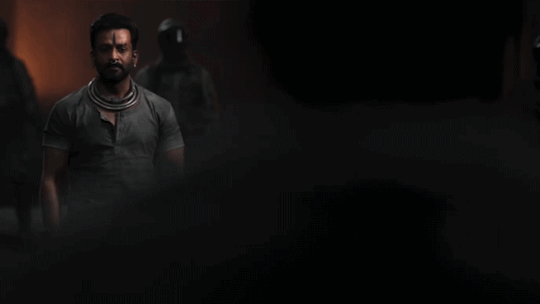
deva only breaks free from the narrative for varadha – which really speaks about varadha's importance and the power that varadha holds over deva.
#first point can alternatively be understood as: varadha honor IS deva's to protect#deva: a weapon to be wielded by those he gives himself to#character analysis#devaratha raisaar#salaar#prabhas#varadeva
362 notes
·
View notes
Text
windbreaker | tsubachika friendship discussion-prompt!
i’m procrastinating so… (also, these are personal takes so a there might be a lot of inaccuracies and such)
i don’t know why, but i have this inkling that tsubaki and chika would be great friends if they’ve met in a different time and setting or something. i can hardly believe that a deva, umemiya’s deva would have nothing that chika would be interested in, when one of the reasons why they could support ume is they share a similar trait with him. may it be the objective, or will alone, i feel like that would be enough to catch chika’s interest. maybe ume just overshines the light they have in them, but it doesn’t mean that they don’t have it. (ume please stop being the sun or smth challenge failed?!?)
heck, umemiya met tsubaki when he was fending off the bullies for making fun of what he likes. i feel like that certain drive that tsubaki has would be enough to catch his attention.
but also, what if, they met after the noroshi war. in the same salon. getting the same hair treatment (to rehydrate their hair because they dye it a lot), and by chance they just talk.
tsubaki tends to follow ume’s will a lot, especially in a matter of building relationships. and while he can be wary, in a certain situation at that, he won’t be rude to him especially when nothing bad is happening after they “settled” the matters from before.
now, here comes the prompt:
this is more of an post-war interaction, because i feel like chika would interest himself with people that ume interacts with.
tsubaki is… well, he didn’t expect this. meeting takiishi chika, in the same salon that he goes to every now and then. not really knowing how to act, he just nods at him as the red head blinked before tsubaki went to the hairstylist to tell them what he for the day.
and being the lucky lad he is, tsubaki was sat next to chika. even with a lot of empty chairs around them.
they don’t seem to particularly want to talk to each other, but it just happened. their stylists were talking, and are involving them in their conversations until the four of them are now sharing opinions about a certain topic.
even chika who often just nods are now speaking a few sentences every once a few responses. and as they were finished with their appointment, well, they didn’t expect to see each other again unless chika visits furin so—
oh well, he’s wrong.
tsubaki finds himself seeing chika in the large crowd in front of the stage where performs. after his performance, he made mind note to steal nakamura’s table (chika’s) to see how he ends up here.
it was supposedly just a light conversation between a customer, and a pseudo-waiter, however, tsubaki finds himself talking around chika who seems to indulge himself with tsubaki’s chatter.
and then it happened again. and again. and again.
endo just finds tsubaki, one of umemiya’s deva, in his’ and chika’s shared apartment.
“endo,” tsubaki greeted him with a nod.
“what… are you doing here?” endo was taken aback, he’s here to fetch chika to show him something interesting; but finds himself interested instead.
“well, chi-chan invited me.” he said with a light hearted tone, expecting someone to react. endo did, feeling quite the irritation. a very familiar feeling.
of course he knows this feeling, that’s how ume makes him feel on a daily basis ever since he and chika became friends.
“i told you not to call me that, tsubakino.” chika emerges from the kitchen with some fruit in a platter, heading towards the sofa to sit beside tsubakino.
“and i told you that friends call each other nicknames! it’s tsubaki-chan! tsu-ba-ki-chan!” tsubaki said as he grabs a sliced apple to bite on it.
it was a weird thing to witness, maybe annoying, but it was also fascinating. endo’s pretty sure that calling chika, “chi-chan” would have him at death’s door if he even breathes that horrendous nickname around him.
wait. fri—huh???
“you should have some, endo. chika-kun bought these with me earlier,”
what.
“and i bought these for us, why are you giving it away?”
What.
“because sharing is caring, chika. endo would love to have whatever you give him, right, endo?”
WHAT.
“hm.”
since when does chika use words to express himself???!!? and he didn’t hit tsubakino tasuku, for not agreeing with what he thinks?
“wha- yo- how- huh?!? since when have the two of you starting becoming friendly?!”
“for a while now,” chika answered, staring blankly at endo who is currently at his wit’s end.
“you are now interested in tsubakino? him?” he asked exasperatedly, pointing towards tsubaki.
“i’m plenty interesting, thank you very much!” tsubakino refuted, eyebrow raising.
“he’s… fun.”
yup. endo’s losing it. maybe he’s being punished for his greed. maybe he’s now paying for all the horrible things he’s done. he can’t even pray because his god is the one who changed!
“i think you broke him, chi-chan. i should go.” tsubaki said, uninterested.
“mhm.”
“i’ll call you, okay? see you!”
note! a very chaotic idea for my very chaotic week. i want a tsubachika friendship and ume just watching them from afar and cheering them on, and endo just hating all the furin students except sakura because of how tsubaki AND ume steals his god. but anyways, if you don’t like it simply don’t read. thanks!
#wind breaker#windbreaker#windbreaker prompt#tasuku tsubakino#chika takiishi#endo yamato#umemiya hajime#tsubachika#tsubachika prompt#tsubachika friendship#they bond over fashion and hairstyling your honor#idk i had a vision#if you don’t like it#don’t read!
21 notes
·
View notes
Text
Bro Daddy was such a cheerful movie to watch, was curious to see what Prithvi would do teaming up with Mohanlal again for his second movie as a director after their success together with Lucifer and Prithvi really didn’t disappoint, he really has an unique style as a director, I think he was trying to proof himself and see if he could do a good rom-com and I think he definitely could! This movie was an enjoyable ride from start to finish. Prithvi said in an interview that he did this movie during pandemic and thinking about a light hearted movie to watch on streaming services with family because the time was bleak and want to bring something to laugh together with and it was clear that he also have so much fun himself directing the movie, love seeing his adorable laugh between takes. What this man couldn’t do?? That’s the real question now.



Even though the movie was so colorful and there were so many scenes to gif lol but for me the most fun part was watching the BTS (pardon the quality because they only gave that tiny footage beside the rolling credits) because when Prithvi was directing he acted and became like every character in his movie 😂
1. Acting like a cool capable savvy tech dude

2. Directing an attitude for a granny 😂
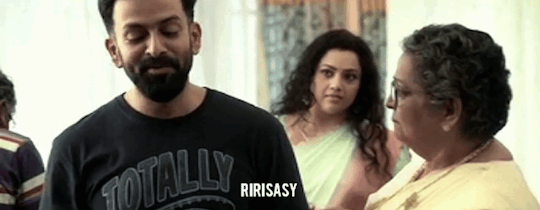
3. Became an eccentric wedding organizer lol
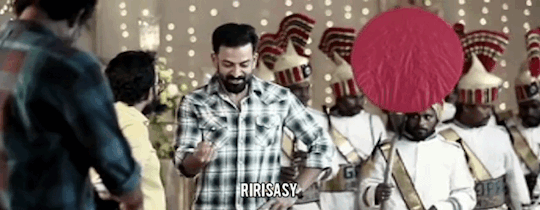

4. How to act cute toward your mother in law

5. And of course directing the Mohanlal, I adore all these BTS footage because Mohanlal look like he clearly adore Prithvi. These are like two strikes successful good movies they made together




No wonder Prithvi could emote so easily when he became the actor himself, he could just put his director mind and thought about what a director would want to see in this or that kind of situation from him.
And my favorite from the bts is pregnant prithviraj 😂 when he’s directing the morning sickness because well…this BTS inspired the whole new Salaar AU for me 😂🤣 (forgive me because whatever movie I watched of Prithviraj I will keep trying to connect it to Salaar somehow, so watch out for more crossover 😂)


Salaar omega verse AU headcanon below (thanks to this bro daddy BTS) 🤣 👇👇🐺🐮
Obviously it’s an mpreg. So proceed if you’re okay with it.
Salaar is so easy to see as an omegaverse because Deva's traits are inherently similar to all the feral possessive alpha traits (with never let anyone to touch Varadha or he will lost his cool and he basically from a wolf tribe like???? That’s an alpha right there) and Varadha is the omega that everyone is crazy about (seriously what’s up with everyone trying to take Varadha’s honor and touching him in humiliating and inappropriate way hands off!)
So, what if Varadha after Deva left Khansaar started showing symptoms making Baachi (okay we gonna pretend he’s alive in this AU) all confused what happened to his brother.
Deva didn't know that Varadha was pregnant with his child and it was Varadha who banished him anyway, Actually even Varadha himself didn't know that he was pregnant he only figured it out after 3 months of Deva's departure.
I will imagine that it’s the same with Prithvi character in bro daddy where he is having a hard time trying to tell the news to his parents but in Salaar AU he keeps making up excuses to Baachi about his morning sickness like it was because of the food stomach flu and everything until he runs out of excuses and Baachi figured it out eventually when his stomach started showing and Varadha just didn’t make a public appearance much anymore.
So Imagine 7 years later Deva broke the seal only to be greeted at Khansaar gate by a 7 years old kid that look like him.
It is hilarious but also sad at the same time moment like “why the hell this kid looks like me , where is his parents”
Varadha was searching for the brat (attitude close to a maniac that one he used to love) that’s been causing havoc all throughout the palace, his kid was so close of getting out of the big gate himself because he was spying on the gate to open ready to run away.
The reason why he run because he got into an argument that morning with Varadha who didn’t tell him about his mother. Varadha was like “you didn’t have a mother, I carried you myself” and his son was like “then where’s my father???? What’s his name” and Varadha refused to answer so his kid set out his heart and packed a tiny backpack throwing his clothes inside ready to explore the world searching for his dad 😂
That he immediately met at the gate! what’s the odd and he looked up at Deva, strong and big Deva full of charisma with sun rays illuminating his figure like “are you my dad?” Just as Varadha arrived behind them with his entourage.
Bilal that arrived behind Deva a moment later also didn’t know that Varadha was pregnant! He left with Deva but it’s so easy for him to put the two pictures together because well the brat look like the splitting image of deva and varadha. They didn’t need DNA test for that to know who his fathers are 😂
Varadha calling his son that he named Raju (pfft) to quickly come to his side and scold him because why would he bother a stranger like that.
Deva is like “is he?–” (Mine) he couldn’t say the word because what if he’s not? 😭😭
Deva didn’t know which one is worse, not knowing you fathered a child and not be there for him for 7 full years or Varadha already taking a queen and got married and have a son now. Both equally devastating. That’s when Baachi rushed toward him to punch Deva on his face and Deva got his answer.
Imagine if it was the last hate sex they have before the big separation that made Varadha got 🫃, I mean they start rawing the moment Deva enter Khansaar (cough the moment where Vishnu was throwing that firework at Varadha’s doorstep and Deva was waking up behind Varadha 👀 omega verse and all I imagined Deva’s presence might’ve triggered an early heat for Varadha) but since Varadha never showed any symptoms when he was around in Khansaar for a whole year so Deva made a quick calculation that the child was indeed conceived when they were tearing the house apart before they went their separate ways. 😞
Anyway that’s all I got from now lol feel free if you want to elaborate it more or continue this headcanon . I love my imaginary 7 years old boy, Raju, already.
#prithviraj sukumaran#bro daddy#bro daddy 2022#malayalam movies#desi tumblr#desiblr#desi movies#mollywood#salaar#varadeva#salaar AU#omegaverse#hear me out#lol#mohanlal#the only thing I didn’t like about bro daddy is just Prithvi hairstyle lmao#everything else is enjoyable
86 notes
·
View notes
Text
Lord Ganesha | Remover of Obstacles


Lord Ganesha, also known as Ganapati, Vinayaka, or Pillaiyar, is one of the most revered deities in Hinduism. Recognizable by his elephant head, Ganesha is worshipped as the remover of obstacles, the patron of arts and sciences, and the deva of intellect and wisdom. His presence is invoked before the beginning of any new venture or journey, symbolizing auspicious beginnings and successful outcomes. Ganesha's origins, characteristics, and the rich tapestry of stories associated with him provide profound insights into Hindu philosophy and culture.
Birth and Origins
Ganesha's birth is narrated in various scriptures, most notably the Shiva Purana and the Skanda Purana. According to these texts, Ganesha was created by Goddess Parvati, the consort of Lord Shiva, from the turmeric paste she used for her bath. Parvati fashioned a boy from this paste and breathed life into him. She then set him at the entrance of her abode to guard it while she bathed. When Shiva returned and attempted to enter, Ganesha, unaware of who Shiva was, stopped him. In the ensuing conflict, Shiva, in a fit of rage, severed Ganesha's head. To console the grief-stricken Parvati, Shiva promised to bring Ganesha back to life. He instructed his followers to find the head of the first living being they encountered, which happened to be an elephant. Shiva placed the elephant's head on Ganesha's body, reviving him and blessing him to be worshipped before all other deities.
Characteristics and Symbolism
Physical Appearance
Ganesha's distinctive elephant head symbolizes wisdom, understanding, and a discriminating intellect that one must possess to attain perfection in life. His large ears signify that a perfect person is the one who possesses a great capacity to listen to others, and his small mouth suggests he talks less and listens more. The trunk of Ganesha is capable of holding a lotus or a modak (a sweet) and symbolizes high adaptability and efficiency.
Attributes
Large Head: Represents wisdom and knowledge.
Small Eyes: Denote concentration and focus.
Trunk: Indicates adaptability and strength.
Big Ears: Symbolize a keen ability to listen and absorb ideas.
Small Mouth: Emphasizes the importance of speaking less.
One Broken Tusk: Signifies the acceptance of the good and the bad in the world.
Iconography
Ganesha is often depicted with a potbelly, symbolizing the capacity to digest both good and bad experiences. He usually holds an axe (to cut off bonds of attachment), a rope (to pull devotees closer to their highest goal), and a modak (representing the sweetness of the soul). His vehicle, the mouse, symbolizes humility and the ability to overcome desires.
Personality and Traits
Ganesha is known for his intellect, wisdom, and benevolence. He is also celebrated for his humor and playfulness, which are evident in numerous stories about him. Despite his divine status, Ganesha is approachable and understanding, making him beloved among devotees. His ability to solve problems and remove obstacles makes him a popular figure for those seeking guidance and support in their endeavors.
Family
Ganesha is part of the Shaivite tradition and is closely associated with his parents, Lord Shiva and Goddess Parvati. His brother is Kartikeya, also known as Murugan, who is the god of war. The familial relationships and stories involving these deities highlight the dynamics of divine interaction and provide moral and spiritual lessons.
Parents: Shiva and Parvati
Shiva, the destroyer in the Hindu trinity, represents the aspect of God that brings about transformation and change, while Parvati represents love, fertility, and devotion. Their union symbolizes the balance of male and female energies in the universe.
Brother: Kartikeya
Kartikeya, also known as Skanda or Murugan, is a warrior deity. The sibling rivalry and companionship between Ganesha and Kartikeya are depicted in various myths, emphasizing different aspects of duty, strength, and wisdom.
Popular Stories
Ganesha and the Mango
One of the well-known stories of Ganesha is the competition between him and Kartikeya to win a mango, a fruit of immortality and wisdom. Shiva and Parvati decided that the one who could circle the world three times first would win the mango. Kartikeya immediately set off on his peacock, but Ganesha, knowing he couldn't match his brother's speed, simply circled his parents three times, stating that for him, they were his world. Pleased by his wisdom, Shiva and Parvati gave him the mango.
The Writing of the Mahabharata
Another significant tale is Ganesha's role as the scribe of the Mahabharata. Sage Vyasa sought someone who could transcribe the epic as he recited it. Ganesha agreed to take on the task on the condition that Vyasa would recite it without pause. To ensure that Ganesha would write carefully, Vyasa composed the verses in a complex meter, which required Ganesha to pause occasionally to understand them, giving Vyasa time to compose further.
Association with Astrology
In Vedic astrology, Ganesha is associated with the planet Ketu. Ketu represents obstacles, detachments, and spiritual pursuits, qualities that align with Ganesha’s role in removing obstacles and guiding devotees on the path of wisdom and spirituality. Devotees often invoke Ganesha’s blessings to mitigate the malefic effects of Ketu in their astrological charts.
#vedic astrology#astrology#sidereal astrology#nakshatra#sidereal#vedic#jyotish#desi#hinduism#ganesha#hindu mythology#ketu
52 notes
·
View notes
Text

Loyalty Deeper than the Sea EX5-071 by banira from EX-05 Theme Booster Animal Colosseum
This option card is a reference to this program card from Hyper Coloseum of the same name! There's no obvious similarities in the effects.
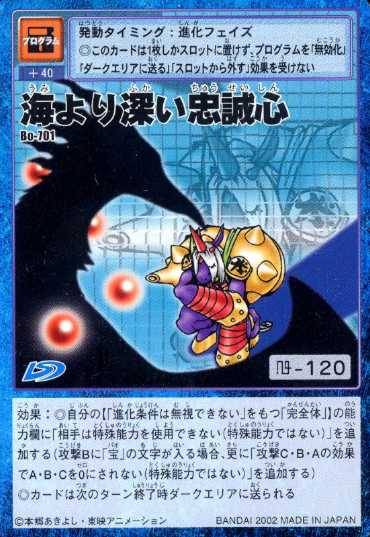
Loyalty Deeper than the Sea Bo-701 from Booster 14 ~The Radiant Crimson Knight of Heavenly Wings~
#digimon#digimon tcg#digimon card game#digisafe#digica#デジカ#digimon references#Hyper Colosseum#Option Card#color: white#EX5#banira#trait: Deva#Loyalty Deeper than the sea
76 notes
·
View notes
Text
Rate Your Traits - OC Edition
Still sick, miserable, but i have been sitting here for four hours, I had fun doing this, I also now see that i have the wrong eye color, on Myron's eyes, will I change it? Don't know. I love him as he is, i just wish there was a mod for Eilistraean earrings. Oh well i can not have everything
@nemo-of-house-hamartia, and @mogruith What do you think? Need to ad more or what?
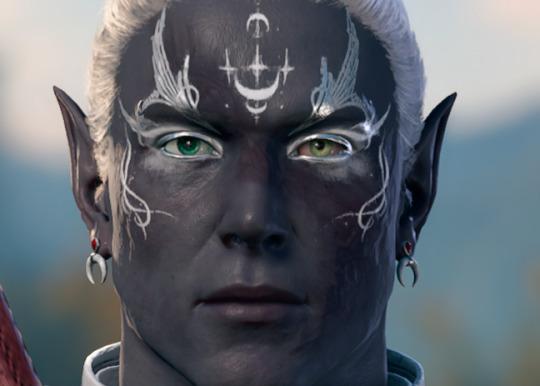
0/10 never expresses this trait 5/10 sometimes expresses this trait 10/10 almost always expresses this trait
COMPASSION 10/10
Myron has compassion for every living thing, it be devil, deva, demon (not Loth), or mortal. He will go out of his way to help, and because he is a drow, he has to work extra hard to show how kind his people can be. He will take peoples abuse if he has to, and he has done that too, many times. He will not stop caring even when you are dead, he will ask Eilistraee or Bahamut to get you from the Fugue Plane, if they can. And takes comfort in their attempt.
BITTERNES 2/10
Myron is normal not a bitter person, he is mortal so he is not perfect. He is abit bitter for not meeting his parents as they was killed by Loth, when he was a baby, but that was outside of his control. And who knows, maybe he would have been a different person had they been alive, and he feels bad for not truly missing them, but as Bahamut said, "It's hard to miss someone that you did not know"
HAPPINES 9/10
Myron is a really happy man, he is rarely sad, so when he is sad, a storm sorcerer will make it rain in Neverwinter. Myron always smiles to the people around him, it be friend or foe. Graz'zt finds this so annoying, to the point he just gave up on trying to seduce Myron, ad in the fact Myron is 2.50 meter, and Graz'zt is 2.7 meter tall, he did not like to look up to se Myron's kind eyes.
POLITNESS 10/10
Myron is so polite that the lord of Neverwinter sometimes ask him to help with trade, events or other important stuff. He once settled a near war between Waterdeep and Neverwinter. It has a limit how ever, and when it reaches zero, fun stuff happens. The Waterdeep/Neverwinter situation was one of these times., he just rolled up a non important papers, and hit both leaders on the head and said that they need to act like adult. Or as he said it, "If you both want to act like toddlers, you are not allowed to drag the armies into this conflict". Then made shure to read thru the peace papers to see if there was anything that could hurt the other city.
CHIVALRY 10/10
As a cleric Myron is cheval to a fault. He believes in honor on the battlefield, and in common courtesy. He was raised to show his friends and enemies respect. He was thought that chivalry meant to show measure of kindness, generosity, and respect. He was thought not to be polite, kind, and unselfish to everyone around him. That is why many calls him the kindest man in the realms
PRIDE 8/10
Myron is a mortal man so he has some flaws, one of them being his pride, he prides himself on his looks, (he know he is good looking). On his knowledge as he is 250 years old, and his MASSIVE library that could rival The Master's Library. He prides him self on the fact he and his friend, has managed to get so many drow away from Loth, and has started construction on a new city for them under Neverwinter, (sunlight sensitivity can be a real bitch). And having the most beautiful woman in all the realms, Tavlon.
HONESTY 9/10
Myron is is honest that when he lies, not even the Lord Of Lies can tell if he is lying. Myron is the embodiment of in honesty is the best policy. BUT, if Tavlon asks him a question that ends with him sleeping on the to small couch, he will lie in a heart beat
BRAVERY - 9/10
Myron is quite brave, but even he has fears. His biggest one is losing Tavlon, his heart and soul. He will not hesitate to stand agenst the horde to protect as many he can, even if it gives them only one second, he will die with out regret. He will how ever not punish THE archdevil supreme in the face. He is not stupid.
RECLESSNESS - 5/10
Before he meet Tavlon, he was a ferly careful man. After he meet her, his anxiety got anxiety. But he is also taking more chances, and is having more fun the he has had in a long time, he is still careful, but now he is not afraid to to be more reckless
AMBITION - 10/10
Myron wants all drow freed form Loth, and see her gone from all planes, and her soul destroyed. He wants to show the world that the drow is only prisoners of Loth.
LOYALTY - 10/10
He is so loyal to his gods and his adoptive parents, (the two dragonborn that raised him), that when they died they made him promise them, that he would not fall to darkness, with out a reason. And not fall to Shar, they would know if he does that. He would never brake that promise, till he meet Tavlon. For her he would destroy the world, if he had to.
LOVE - 10/10
Myron is a all or nothing type of man. He will show you the world of colors, or the universe. Give him a chance, and he will treat you better then a goddess. He near literally gave his heart to Tavlon to show how much he loves her. The only reason he did not was because, she said he did not have to, she believes him. And she has not been better treated in the world, then when Myron spoils her.
SENSE OF FAMILY - 10/10
Myron wants a big family, he wants many children, biological or adopted, he does not care, he wants as many kids as possible. That is one of the major reasons he is still working at the orphanage. To make shure that they find they find their forever family. And to give them a good role model. To show them how a real adult should be treating everyone else, and to help them on their way in life.
ATTRACTIVNESS - 8/10
Now Myron is attractive, and he knows it. He has used it to get intel on adventure before, to charm trades and to charm his enemies. He is a bit sanative about his burn scar he has on his face, and the fact he has a prosthetic right eye. The eye he is not so sensitive about anymore, as Loth took it when he was born, and the prostatic was a gift from the lord Neverwinter was there when arrived at the Temple of Bahamut, by Eilistraee mail, (litary she gave him to the temple priests). The burn scar on the other hand came from a fight he had with a dreider, and got burned by it. So that is still a soar theme, but he won the battle.
AGILITY - 9/10
Not shure if this counts, but this man can bend in ways that could make a snake green with envy. Since he dances so mush he, learned to bend in painful ways to many people. But he does it, he once removed his armor to squeeze in crack in a wall to get some children out of a collapsed building. He can collapse his ribs a little bit, so he had better place.
SEX DRIVE - 10/10
Before Tavlon come into his life he had to be tag temed by Vhaeraun and Divi'rach, just not to feel so stressed, and pent up. He is still not shure on how Vhaeraun, joined the nightly escapades, but he did. And when Tavlon came into the picture, she and Myron went at it like breeding rabbits. They showed each other what true love making is. And as long as it is not a woman he sleeps with, she don't care about Vhaeraun and Divi'rach. And as long as he don't get pregnant,only she can do that. (Vhaeraun has never been more terrified in his long life)
11 notes
·
View notes
Note
Hey there sweets,
I wanted to know you're opinion of Utara Ashada women. I've noticed that there isn't acknowledgement or too information on the nakshatra. Good day and thank you
Hiiiiii. Good day to you too.
Okay lets start with the lore of the nakshatra, lord vishnu taking the form of Mohini the maiden to distract and lure away the Asuras and demons during the churning of the ocean after they took the possesion of nectar of immortality and give it back to the devas/gods . The themes we see in the story are that of resilience, leadership, idealism, strategic thinking and a shift in dynamics due to these traits.
With my experience with UA women, I have had 2 friends and both of them had strong leadership qualities and resilience.They just have this way of walking into a room and instantly lighting it up with their confidence and energy. When things get tough, they don’t just fold; they turn setbacks into winning moments. I have never seen them giving up. Being a dev gana nakshtra they have strong ethical values, are loyal and nurturing as well.
Idealism is another defining trait I’ve noticed. Their strong sense of justice echoes the Sun’s role in representing truth and higher purpose. They are known to engage in social causes and events, believing in the power of change. Conversations with them can be deeply enriching; they challenge you to think critically and expand perspective.
Unlike Shiva who grants boons to anyone devoted to him, Vishnu only blesses the gods and anyone of benefic nature, loyalty is another strong trait of this nakshtra. They are incredibly devoted friends, always ready to offer support and honest advice, making it clear that authenticity is key to their relationships.However, their high ideals sometimes lead to disappointment when reality doesn’t meet their expectations.
They are always curious for knowledge too and never stop learning.
These qualities can sometimes manifest negatively in certain individuals when underdeveloped ,
Resilience many a times manifests as stubbornness .When they set their minds on something, they can become really stubborn. This inflexibility can be tough for others, especially in group situations where collaboration is key. Their idealism drives them to aim for the best, but it can quickly turn toxic if they project those high expectations onto others. These women can be fiercely loyal, but sometimes that loyalty can tip into possessiveness. They might become overly clingy or controlling in relationships, suffocating those they care about.Their strong sense of right and wrong can make them judgmental. Their desire to lead and do things their way can sometimes come off as controlling. They might insist on having things done their way, leaving no room for others to contribute or share their ideas.
These are some of the areas they might have to work on potentially to become the best version of themselves.
Elephant as the Yoni Animal of Uttara Ashadha
They are usually wise , calm , patient and value social bonds. In relationships they are known to be nurturing and desire a strong emotional connection rather than just physical pleasure.They are often confident and may not shy away from taking the lead and expressing their desires, which can create a fulfilling dynamic in intimate encounters.
Life Pattern
Early Life:Strong Foundations: Many Uttara Ashadha individuals have a supportive family environment that emphasizes values such as ethics, education, and hard work. They are often encouraged to pursue academic and extracurricular interests.Leadership Tendencies: Even in their early years, they may display natural leadership abilities, taking initiative in group projects or extracurricular activities.
Career Path: Leadership Roles: Uttara Ashadha individuals are often drawn to leadership positions and may find themselves in roles that allow them to influence others, such as management, teaching, or community organizing. Their ability to inspire can lead them to be respected figures in their professional circles. Given their idealistic nature, many may engage in social causes, nonprofit work, or careers in public service. They feel a strong urge to contribute positively to society and advocate for justice and equality.
Life Challenges: Throughout their lives, they may face various challenges that test their resilience and values. These experiences can lead to significant personal growth, helping them understand their strengths and weaknesses better
Spiritual Exploration: Their search for higher meaning often leads them to spiritual or philosophical pursuits. This exploration can deepen their understanding of their purpose and enhance their overall well-being.
This is my limited knowledge on this nakshatra, hope this could be of your help.
21 notes
·
View notes
Text
magic system dr | aura reading & detection tech
------------------------------------------------------------------------------
date: june 25 2025. started: 9:21 pm ended: 9:56
------------------------------------------------------------------------------

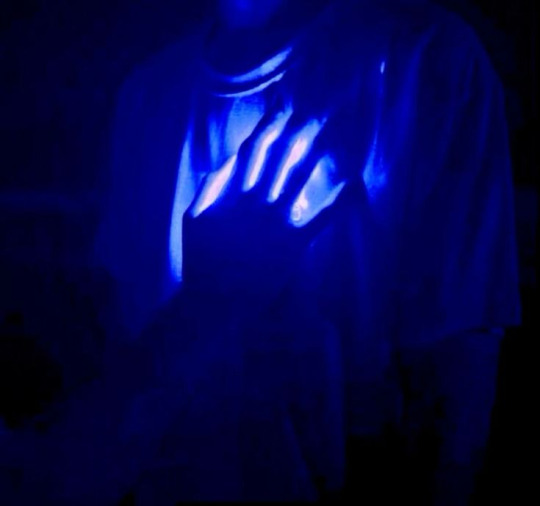
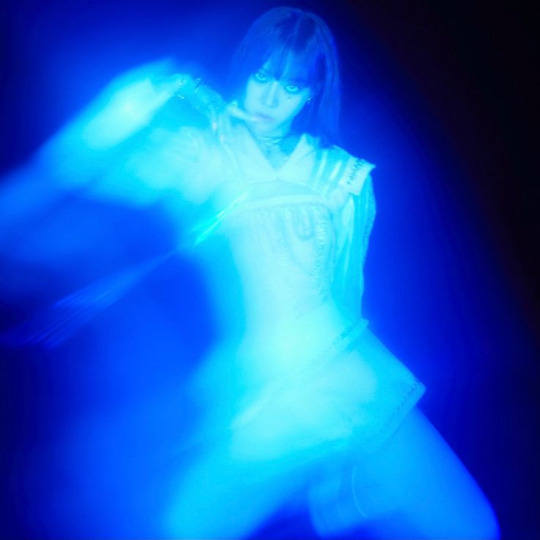
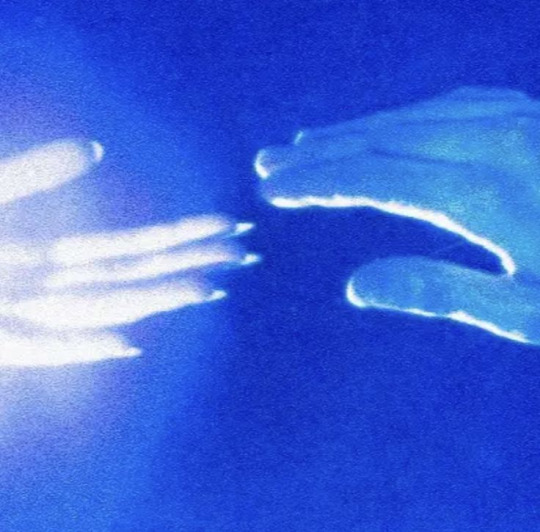

✧˖*°࿐aura reading technology
the scientific infrastructure supports magic classification, safety, and research.
modern societies with widespread magic have developed advanced systems to study, regulate, and interpret aura phenomena. aura-reading technology is not just for identification — it's vital for combat training, job placement, civilian safety, and national security.
*ೃ༄spectral analyzers
“The soul under a microscope.”
ꪆৎ 𓂃 › these devices isolate and identify aura wavelengths, translating visible or invisible magical emissions into a precise color-tone signature. ꪆৎ 𓂃 › they operate similarly to full-body scanners or advanced MRIs, using manadetection lenses, ley resonance chambers, or crystal refraction beds. ꪆৎ 𓂃 › spectral analyzers are capable of reading even dual, tri, or shifting auras by separating tone overlays using multidimensional spectrum mapping. ꪆৎ 𓂃 › advanced versions are portable (used in field operations), while institutional models are building-sized and used for research or high-level diagnostics. ꪆৎ 𓂃 › some elite military models can even detect hidden aura traits, such as latent affinities or suppressed trauma-based mutations.
*ೃ༄power meters
“Your wattage, your weapon.”
ꪆৎ 𓂃 › measure a magic user’s raw mana output in Standardized Power Units (SPU), which combine raw aura density, spell amplification rate, and burst capacity. ꪆৎ 𓂃 › readings are divided into resting power, surge power, and drain thresholds (the point at which magic use becomes dangerous to health). ꪆৎ 𓂃 › power meters are used in everything from combat simulations to spell license tests, and job qualification boards. ꪆৎ 𓂃 › some models are worn like bracelets or rings and update in real-time for field operatives — especially those with fluctuating or trauma-triggered power spikes. ꪆৎ 𓂃 › red zone readings (SPU thresholds exceeding the legal maximum) are automatically flagged in certain jurisdictions, especially near urban ley conduits.
*ೃ༄control assessors
“How steady is your hand?”
𓂃 ࣪˖ ִֶָꪆৎ these stations test magical finesse, response time, and multitarget accuracy using virtual or physical challenges. 𓂃 ࣪˖ ִֶָꪆৎ think magical “driving tests”: users must perform spells within specific parameters, like conjuring a flame within a 5 cm radius without burning a dummy. დ࿐ ˗ˋ includes tasks such as: ꪆৎ 𓂃 › threadweaving: threading a spell through moving rings. ꪆৎ 𓂃 › spell dissection: safely dismantling a layered enchantment. ꪆৎ 𓂃 › simulated crisis response: cast multiple spells under time pressure without collateral damage. 𓂃 ࣪˖ ִֶָꪆৎ users receive a control class rating (1–7) after passing or failing various difficulty tiers. 𓂃 ࣪˖ ִֶָꪆৎ some tests are environment-specific (underwater, high-stress, low-mana zones), simulating real combat or unstable fieldwork.
*ೃ༄stability monitors
“The difference between control and collapse.”
𓂃 ࣪˖ ִֶָꪆৎ constantly assess whether a magic user’s aura is stable or experiencing fluctuations, interference, or degradation. 𓂃 ࣪˖ ִֶָꪆৎ used in hospitals, training facilities, and urban centers with heavy mana saturation to prevent magical breakdowns or mass surges. დ࿐ ˗ˋ indicators include: ꪆৎ 𓂃 › mana drift: uncontrolled leakage of aura into the environment. ꪆৎ 𓂃 › spell corruption: spells twist mid-cast due to emotional or mental instability. ꪆৎ 𓂃 › overcast markers: dangerously high mana buildup. 𓂃 ࣪˖ ִֶָꪆৎ worn in patches, chest straps, or neural clips. readings flash yellow (unstable), orange (critical), or red (collapse imminent). 𓂃 ࣪˖ ִֶָꪆৎ especially important for young aura users, those with trauma-affected tones, or S-Class individuals who risk devastating outbursts.

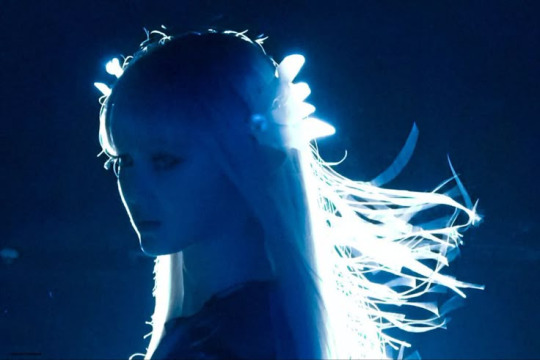
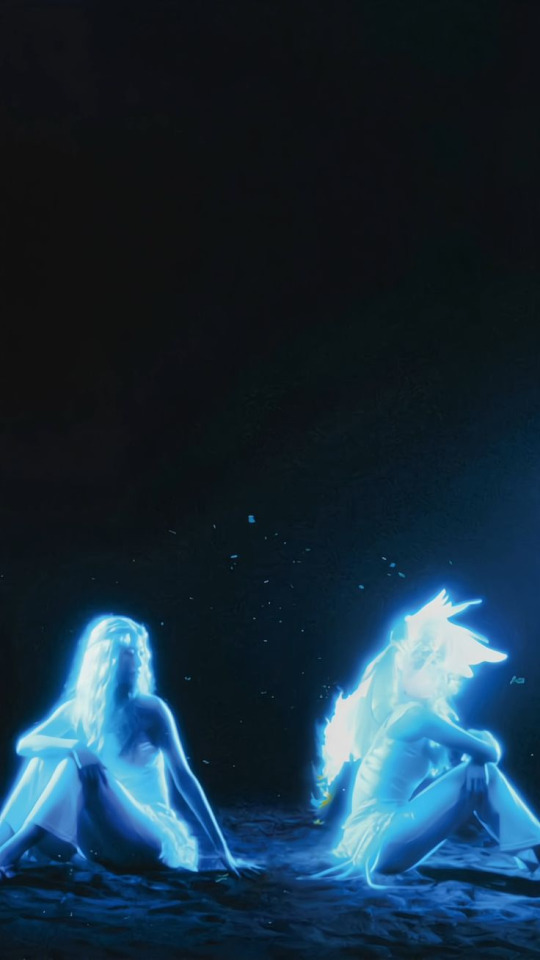
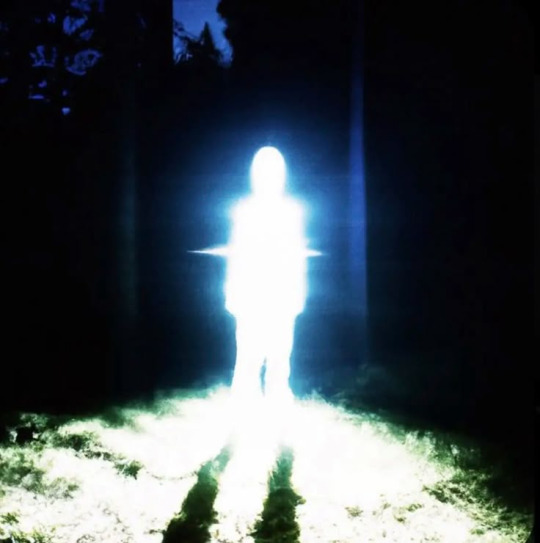

✧˖*°࿐legal magical monitoring
the framework that balances personal freedom, national safety, and ethical boundaries in a magic-using world.
as magic became widespread and powerful, governments developed international and regional laws to register, track, and regulate aura users. this was partly for security — and partly due to the devastating history of magic-related disasters.
*ೃ༄registration requirements
“Your name. Your aura. Your responsibility.”
𓂃 ࣪˖ ִֶָꪆৎ all individuals with detectable aura activity must register by age 18 with their local Magical Affairs Office (MAO) or its equivalent. დ࿐ ˗ˋ registration includes: ꪆৎ 𓂃 › aura color and tone ꪆৎ 𓂃 › power and control class ꪆৎ 𓂃 › spell affinities ꪆৎ 𓂃 › health risk ratings 𓂃 ࣪˖ ִֶָꪆৎ refusal to register is considered a class III infraction and can result in suppression order mandates, travel restrictions, or even forced tagging. 𓂃 ࣪˖ ִֶָꪆৎ some nations have voluntary pre-18 programs, where prodigies (especially A-Class+ candidates) are fast-tracked into protected training zones.
*ೃ༄power ratings
“You are more than your number — but your number still matters.”
𓂃 ࣪˖ ִֶָꪆৎ all registered aura users receive an official Power Rating ID, required for employment, training, or casting within populated zones. დ࿐ ˗ˋ this rating includes: ꪆৎ 𓂃 › classification (e.g., B4 – Inferno Power, Skilled Control) ꪆৎ 𓂃 › special endorsements (healing license, combat license, ritualist permit) ꪆৎ 𓂃 › restrictions (e.g., banned from casting in schools, cannot cast during full moons) 𓂃 ࣪˖ ִֶָꪆৎ used by employers, guilds, security firms, and public transport hubs to determine magical risk and access levels. 𓂃 ࣪˖ ִֶָꪆৎ updated every 2–5 years, or after major incidents/changes (trauma, mutation, skill upgrade).
*ೃ༄monitoring devices
“Magical privacy ends where public safety begins.”
𓂃 ࣪˖ ִֶָꪆৎ devices that track aura emissions, spellcasting frequency, and location-based surges in high-risk areas (airports, courts, leyline hubs). 𓂃 ࣪˖ ִֶָꪆৎ usually passive — detect, log, and store information without interrupting. 𓂃 ࣪˖ ִֶָꪆৎ some facilities require mandatory suppressor tags or casting inhibitors for A-S class individuals or those with unstable readings. 𓂃 ࣪˖ ִֶָꪆৎ misuse of magical energy in monitored zones leads to auto-alerts sent to Magical Enforcement Units. დ࿐ ˗ˋ technology is constantly evolving to distinguish between: ꪆৎ 𓂃 › intentional casting ꪆৎ 𓂃 › emotional surges ꪆৎ 𓂃 › residual aura bleed ꪆৎ 𓂃 › external possession or corruption
*ೃ༄suppression fields
“Magic stops here.”
𓂃 ࣪˖ ִֶָꪆৎ areas saturated with aura-dampening energy that reduces or nullifies magic. 𓂃 ࣪˖ ִֶָꪆৎ can be natural (leyline dead zones) or artificial (generated via runic engines, sound-frequency disruptors, or ancient sigils). დ࿐ ˗ˋ found in: ꪆৎ 𓂃 › detention centers ꪆৎ 𓂃 › government buildings ꪆৎ 𓂃 › high-security academies ꪆৎ 𓂃 › hospitals treating mana-overload დ࿐ ˗ˋ not all suppression fields are equal: ꪆৎ 𓂃 › level 1: general dampening (reduces effectiveness by 50–60%) ꪆৎ 𓂃 › level 2: emergency shutdown (negates nearly all external spells) ꪆৎ 𓂃 › level 3: total nullification, including passive aura effects (dangerous for some users — can cause mana suffocation or backlash) 𓂃 ࣪˖ ִֶָꪆৎ use of suppression fields on minors or civilians without consent is a hot legal issue, with many human rights groups protesting over potential abuse.

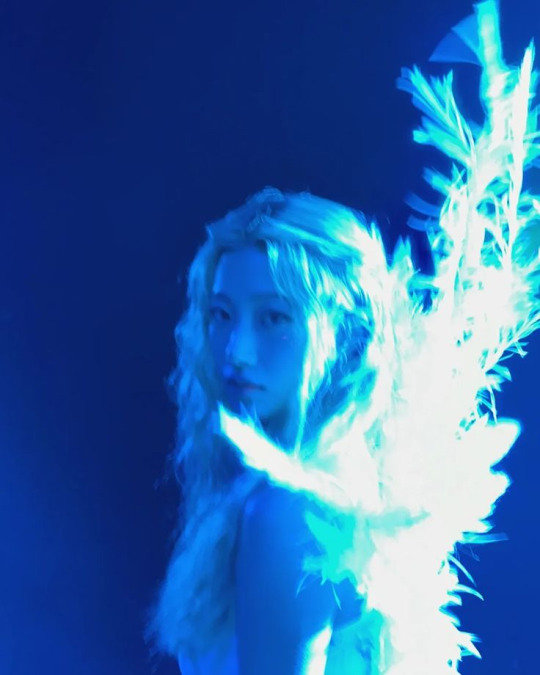
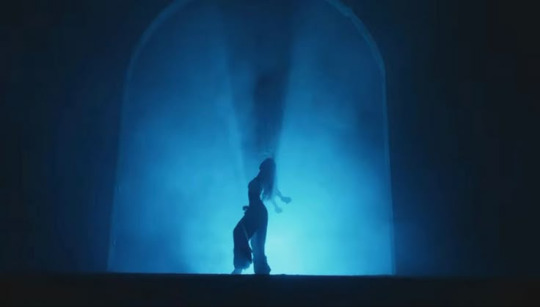
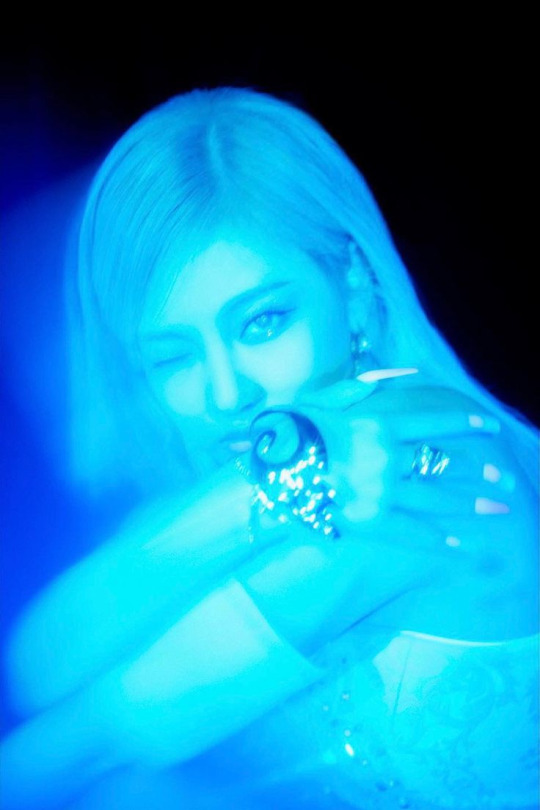

*ೃ༄social reactions & cultural influence
𓂃 ࣪˖ ִֶָꪆৎ aura scanners are sometimes feared by rural or traditionalist communities who see them as dehumanizing or a sign of overreach.
𓂃 ࣪˖ ִֶָꪆৎ black markets exist for aura scramblers, which temporarily block readings from scanners — often used by criminals or anti-registration rebels.
𓂃 ࣪˖ ִֶָꪆৎ powerful figures with S-Class readings may be publicly known, heavily guarded, or politically untouchable — creating a mystique or fear around them.
𓂃 ࣪˖ ִֶָꪆৎ some schools and religious orders teach non-digital aura reading, such as aura empathy, color-meditation, or song-based resonance testing.
#reyaint#reality shifting#shiftblr#reality shifter#shifting#shifting community#shifting motivation#anti shifters dni#dr scrapbook#dr world#boarding school dr#magic system dr
7 notes
·
View notes
Text

The theories of pratibimba and spanda holds that all forms, ideas, and archetypes exist as pre-formations within subtler realms, akin to the archetypal world of Atziluth in Kabbalah - within the higher tattvas.. and these pre-manifest concepts have their own spanda – a unique vibration or pulse that defines their nature and influence within the cosmos. This spanda is not merely an abstract notion but a living, dynamic resonance that echoes through all levels of existence, from the most refined to the grossest.
Humans and jivas themselves carry their own spanda, a complex amalgamation of karmic traces, sanskaras, and vibhasas that shape their perceptions and interactions with these archetypes.
Just as a polished mirror reflects light differently than a fogged or cracked one, the jiva's particular vibrational state determines how it experiences the divine, the demonic, and everything in between. The divine is not a monolithic force perceived uniformly by all beings, but a spectrum of vibrations that resonate uniquely within each consciousness, shaped by the distinct spanda of the perceiver.
This is why certain archetypes or entities, while possessing objective existence, appear differently to different individuals. They do not merely project their qualities uniformly, but rather reflect back the nature of the perceiving consciousness, filtered through its accumulated karmas and mental impressions. One jiva may encounter a deity as a terrifying force, while another may experience it as an all-embracing presence, both responses being valid reflections within the grand spectrum of spanda.
The diversity of religion, spirituality, and even moral systems can be seen as a direct consequence of this principle. It is not merely cultural conditioning or subjective bias but a deeper, vibrational truth – that different jivas resonate with different facets of the divine. What is a guiding force for one may be a confounding or destructive influence for another. This explains why some are drawn to the dark, chaotic forces of the Sitra Achra, the paths of Aghora, and various Tantriks, while others find their calling in the "light-filled" corridors of Vedic or Abrahamic devotion.
The universe itself, at its most fundamental level, is vibration, and these frequencies govern the experience of all beings. Qualia – the subjective, ineffable nature of perception – arises from this interplay, making the experience of heat, cold, pleasure, or pain vastly different for each jiva. The same fire that warms one creature may consume another, the same darkness that terrifies one being may be a source of comfort and power for another.
This principle extends even to the structure of one's spiritual path. A jiva's natural inclinations, shaped by its unique spanda, make certain practices more effective for accessing divine realms or gaining spiritual insight. This is not merely psychological but vibrational, aligning with the gunas – sattva, rajas, and tamas – which color the nature of one's spiritual journey. Some are naturally inclined toward the transcendent and monistic, others toward the immanent and pluralistic, reflecting the inherent diversity of spanda across time, species, and individual beings. This variation is also profoundly influenced by the yugas, the great cycles of time in Vedic cosmology, where certain traits and combinations become more advantageous or spiritually potent depending on the collective vibrational environment of the age.
Even in the very term "deva" we see this principle at work. In the Vedic tradition, devas are beings of light, the pure forces of order and cosmic harmony, while in Zoroastrianism, the word evolved into "daeva" – the demonic forces of chaos and falsehood, representing the inversion of these same beings in a different cultural and vibrational context. The modern term "devil" itself descends from this inversion, illustrating how beings with a shared metaphysical origin can be perceived as radically different depending on the karmic and vibrational orientation of the perceiver.
Astrology offers a striking parallel to this theory. Planets are traditionally labeled malefic or benefic, yet their effects vary dramatically depending on the spanda of the individual chart. In my case, this principle is clearly illustrated. My Saturn, often considered a harsh and limiting force, is functionally benefic in my chart, being placed in the 12th house in Capricorn in my D60 (Shastiamsa), a chart known to represent the purusha or jiva at the most subtle level. Here, Saturn is in Deva Devata, the most benefic of the Shastiamsa devatas, indicating a highly supportive and spiritually empowering influence. Additionally, my Saturn is in Capricorn in the 4th house of my D9 (Navamsa) and in Aquarius in the 11th house of my D1 (Lagna), all domicile placements where Saturn naturally flourishes, further reinforcing its benefic nature across multiple layers of my being.
Moreover, my Guru Chandal Yoga, a combination of Jupiter and Rahu in close conjunction, occurs in the 7th house of my D1 and the 3rd house of my D60, both in the same half of a degree and within the Shuddha (Pure) Devata – a strongly benefic devata known for its purifying and uplifting influence. This placement is particularly significant in Kali Yuga, where such combinations are often seen as advantageous, granting unconventional wisdom, insight, and resilience. This again underscores how what might be considered malefic in one context can function as benefic in another, depending on the overall vibrational context and karmic alignment.
I have directly engaged with the devatas of my D60 through deep meditation, ekagrata, the dharanas of the Vijnana Bhairava Tantra etc.. moving up the tattvas to access knowledge of my chart, jiva, and karma. This direct interaction with these energies has deepened my understanding of how spanda influences not just my personal experience, but the very fabric of reality itself. This personal practice has confirmed for me the profound truth that the divine, the demonic, and the self are not fixed entities but fluid, vibrational reflections within the grand mirror of consciousness.
#esoteric#occult#jyotish#vedic astro notes#vedic astrology#hinduism#tantra#shiva#goddess#shakti#bhairava#spirituality#sanatanadharma#rahu#yoga
8 notes
·
View notes